Sewing With Different Fabrics Sparks Creativity And Joy
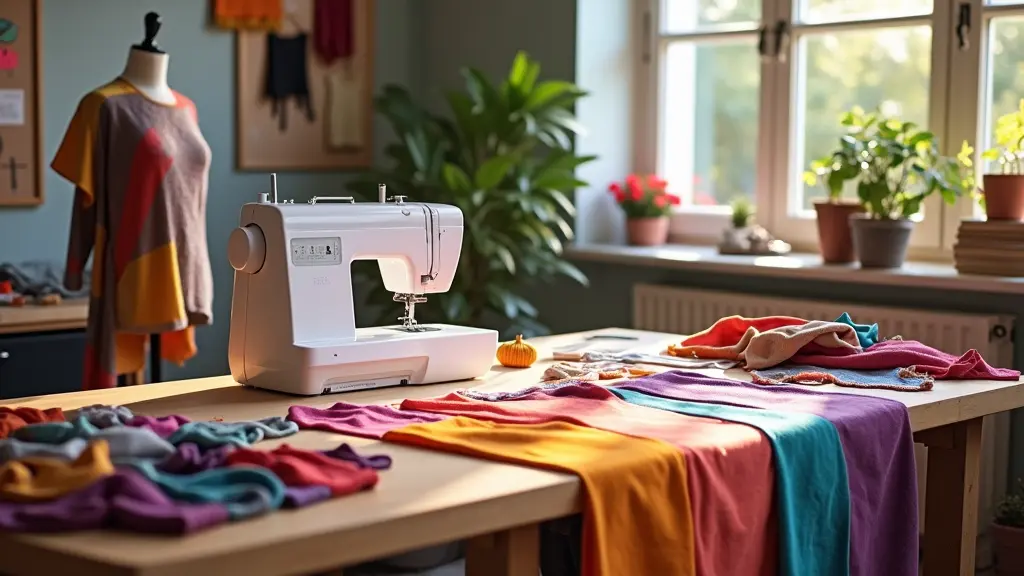
Embarking on textile adventures can be a creative journey, as stitch mastery is elevated by the subtleties of material manipulation. Here’s how.
Sewing with Different Fabrics
Exploring various fabrics can bring joy to sewing projects and spark creativity.
Fabric choices can be overwhelming, but embracing the diversity of fabrics can result in unique and personalized creations.
Discover the thrill of working with various textures, weights, and patterns
From cotton to silk, and beyond, there are countless types of fabrics to explore. Working with various textures, weights, and patterns can be a tactile experience that ignites the senses and inspires creativity, as the needle becomes an instrument of artistic expression.
Textile Adventures: Exploring Fabric Varieties
As fashion enthusiasts, we often find ourselves drawn to the versatility and creative possibilities offered by the world of textiles. By exploring the diverse range of fabric varieties, we can unlock a universe of endless possibilities and transform our DIY fashion projects into one-of-a-kind masterpieces that reflect our unique style and personality.
I.
Introduction
===============
Exploring fabric varieties can be a daunting task, especially for beginners.
Understanding the benefits of working with different materials can lead to garment customization and pattern adaptation opportunities. We’ll delve into the world of textile adventures, exploring fabric varieties to help you take your DIY fashion projects to the next level.
II. Common Fabric Types for Beginners
=====================================
### Cotton
Cotton is one of the most popular fabrics for beginners. Known for its breathability and softness, cotton is ideal for garment customization, particularly in dressmaking and DIY fashion projects that require pattern adaptation and machine versatility.
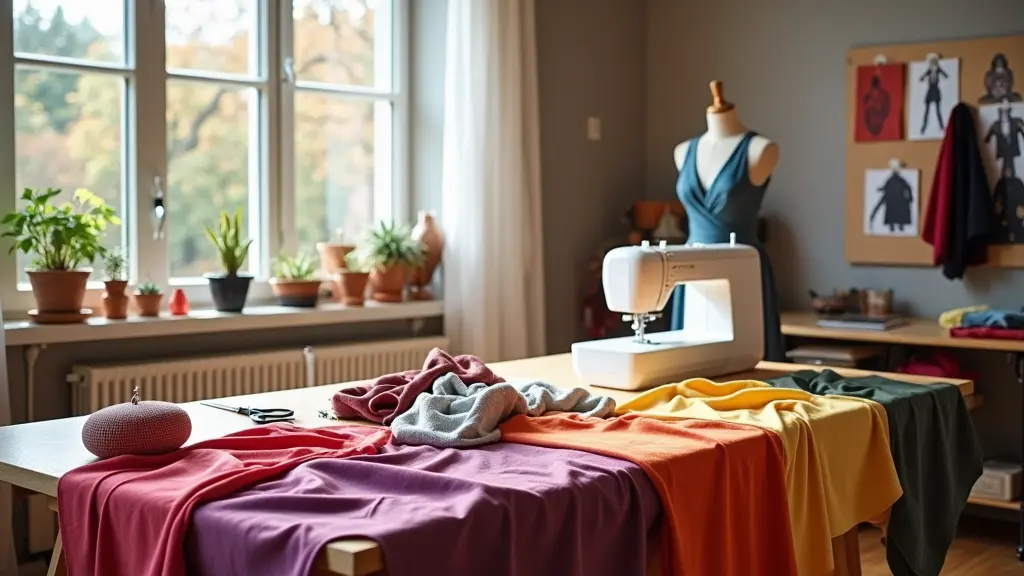
Unleashing Creativity Through Material Manipulation
When we allow ourselves to explore unconventional approaches, we often uncover hidden reservoirs of creativity within. This departure from familiar routines can lead to innovative breakthroughs and a fresh perspective on artistic expression.
Unleashing Creativity Through Material Manipulation
Surfacing the Unconscious
Working with handcrafted clothing can be a powerful way to tap into our subconscious mind, allowing new ideas and perspectives to emerge.
By experimenting with upcycled materials, we can gain access to our unconscious thoughts and emotions, leading to unique and innovative creations.
For instance, the tactile experience of working with handcrafted clothing can evoke a sense of nostalgia and warmth, influencing the overall aesthetic of the piece.
Breaking Free from Conventions
Data shows that creative blocks can be overcome by pushing the boundaries of traditional techniques and norms.
| Unconventional Approaches | Traditional Techniques | Experimentation | Breaking Conventions |
|---|---|---|---|
| Lead to innovative breakthroughs | May result in creative blocks | Can tap into subconscious mind | Can overcome creative blocks |
| Can evoke new ideas and perspectives | May limit artistic expression | Can influence overall aesthetic | Can push boundaries of norms |
| Can be a powerful way to tap into creativity | May not allow for experimentation | Can lead to unique creations | Can lead to fresh perspective |
Crafting Joy With Different Textures
I am waiting. Introduction**
The art of crafting is often associated with creativity, precision, and attention to detail, but it is also a sensory experience that can evoke strong emotions and create lasting memories.
By incorporating a variety of textures, crafters can add depth, dimension, and a sense of tactility to their creations, ultimately bringing joy and satisfaction to the creator and the user.
II.
The Power of Texture in Crafting
Embellishments such as thread choices, seam finishes, and alterations can significantly influence the emotional impact of a crafted piece. The tactile sensations evoked by different textures can be both soothing and stimulating, ranging from the calming smoothness of silk to the invigorating roughness of burlap. durable and long-lasting.
Needle Artistry For Various Fabrics
The world of needle artistry offers endless creative possibilities, and mastering various fabrics is a crucial aspect of this craft. Choosing the right fabric can elevate a design from ordinary to extraordinary.
Understanding Fabric Types
————————
Fabric types can be broadly categorized into wovens and knits.
Wovens are created by interlacing two sets of yarns, while knits involve looping yarns to create a fabric.
Wovens are more structured, providing a crisp finish, while knits are stretchy and can be used for garments requiring flexibility.
Sustainable Draping with Wovens
—————————
When working with wovens, it’s essential to understand the grainline to ensure that the fabric lies flat and prevents distortion in the finished product. Perfect for fashion enthusiasts looking to upcycle their skills through tutorials, beginner projects, advanced challenges, and sustainable practices.
Key Facts About Needle Artistry Fabrics
- Fabrics can be broadly categorized into wovens and knits.
- Wovens are created by interlacing two sets of yarns, while knits involve looping yarns to create a fabric.
- Wovens are more structured, providing a crisp finish, while knits are stretchy and can be used for garments requiring flexibility.
- Understanding the grainline is essential when working with wovens to ensure the fabric lies flat and prevents distortion in the finished product.
How To Master Pattern Adaptation
Dyeing to create garments that fit like a dream, many sewists struggle to navigate the complexities of pattern adaptation. By mastering this essential skill, you’ll unlock the secrets to confidently crafting stunning, one-of-a-kind pieces that reflect your personal style.
I.
Introduction
Pattern adaptation is a crucial skill for every sewist.
It enables you to create garments that fit like a glove, using fabrics that complement your style and preferences. With pattern adaptation, you’ll never have to worry about dresses that are too tight or pants that are too loose again.
II. Understanding Fabric Behavior
Fabric behavior refers to the way fabrics respond to sewing techniques like embroidery.
Understanding this is critical to successful pattern adaptation. For instance, cotton’s tendency to wrinkle easily requires adjustments to ensure a smooth dyeing process.
Garment Customization: Fabric Considerations
Where Customization Meets Quality The latest trend in the apparel industry has shifted the focus from mass production to customized clothing, empowering individuals to express their unique style and preferences. Community engagement has become a vital aspect of this movement, as people seek tailored garments that align with their values, lifestyle, and personal brand.
Garment customization has transformed the way we approach fashion, offering an unparalleled level of personalization and uniqueness.
To unlock the full potential of this innovative approach, it’s essential to consider the fabric properties that make it all possible.
The Importance of Understanding Fabric Properties
When it comes to garment customization, choosing the right fabric is crucial. Fabric properties such as zipper installation, buttonholes, and cutting methods play a significant role in determining the overall quality and functionality of the final product, which ultimately is shaped by community engagement and facilitated through a comprehensive shopping guide and interfacing.
| Fabric Properties | Impact on Garment Customization | Community Engagement | Shopping Guide |
|---|---|---|---|
| Zipper Installation | Directly affects garment functionality | Community feedback on zipper preferences | Zipper installation options |
| Buttonholes | Influences garment aesthetics and functionality | Community input on buttonhole designs | Buttonhole customization options |
| Cutting Methods | Affects garment quality and fit | Community feedback on cutting methods | Cutting method tutorials and guides |
Dressmaking With Diverse Materials
Fashion has always been a means of self-expression, and dressmaking is a crucial aspect of this. By experimenting with various materials, dressmakers can craft unique garments that reflect their personality, style, and creativity.
I.
Introduction to Dressmaking With Diverse Materials
Brief overview of the importance of dressmaking with diverse materials:.
Dressmaking with diverse materials is a key aspect of fashion design, as it provides the opportunity to create distinctive and personalized garments that reflect one’s personality and style.
By incorporating a variety of fabrics, dressmakers can experiment with texture, color, and pattern, resulting in truly one-of-a-kind creations, often requiring lining techniques to give them a professional finish.
**II.
Cotton is a natural fiber that offers a soft, breathable, and comfortable choice for garments that require lining, hemming, dart manipulation, pleating, gathering, or bias binding.
DIY Fashion: Fabric Selection Tips
Unlocking the World of DIY Fashion As you embark on a DIY fashion journey, you’re likely to be faced with a daunting array of fabric options, each with its unique characteristics and quirks. The thrill of creation lies not only in the design itself but also in the art of choosing the perfect fabric to bring it to life.
Embracing the Flexibility of Fabric
Did you know that different fabrics can significantly alter the look and feel of your DIY fashion project? For instance, working with soft and flowy fabrics can create a feminine and delicate design, while choosing structured and rigid fabrics can yield a more masculine and edgy outcome.
Selvage utilization plays a crucial role in achieving the desired texture and drape. Grain considerations, selvage utilization, shrinkage prevention, preshrinking, weight factors, and stretch handling all contribute to the final product, Grain considerations also come into play, allowing you to manipulate the fabric to create a look that’s truly one-of-a-kind.
Upcycled Sewing Projects Spark Joy And Creativity
Costume Sewing Sparks Creativity And Joy
Costume Sewing Sparks Creativity And Joy
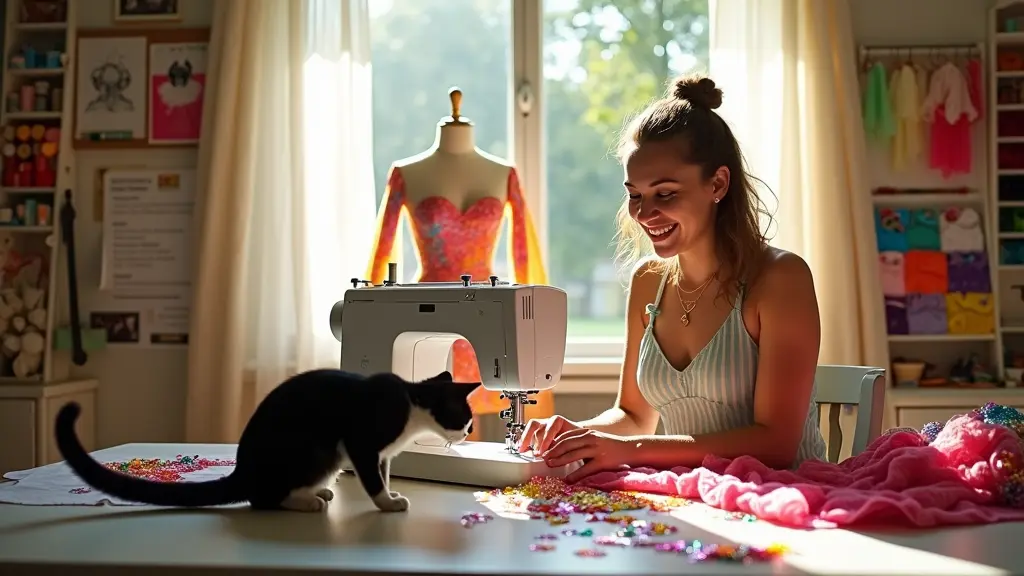
A Path to Unbridled Imagination Unlocking the secrets of costume sewing is a voyage of discovery, where the boundaries of creativity are pushed and the thrill of innovation takes center stage. As you delve into the world of theatrical garments, the tactile sensation of fabric and pattern comes alive, transporting you to a realm where dreams take shape.
I.
Unleashing Imagination: Costume Sewing Ignites the Spark Within
Sewing your own costume is an exercise in creative freedom, allowing you to bring your ideas to life. By working directly with pattern drafting, you can add a level of customization and attention to detail that’s often lacking in store-bought options, subtly shifting the focus from mere garb to theatrical garments that exude character design, historical accuracy, and embellishments.
Unleashing Creativity Through Pattern Drafting
As we dive into the world of pattern drafting, it becomes clear that the art of bringing fabric to life is not just about following a set of rules, but about cultivating a unique sense of creativity and self-expression. Unlocking the secrets of pattern drafting unlocks a world of creative possibilities, allowing individuals to bring their imagination to life through a blend of technical skill and artistic expression.
Introduction to Pattern Drafting
Pattern drafting is a type of creative expression that involves designing and creating custom garments and textiles using a combination of mathematical calculations and artistic flair.
At its core, pattern drafting is about understanding the intricacies of human anatomy and translating that knowledge into a physical manifestation of one’s imagination. allows individuals to tap into their creative potential and brings their imagination to life through crafting unique and imaginative outfits.
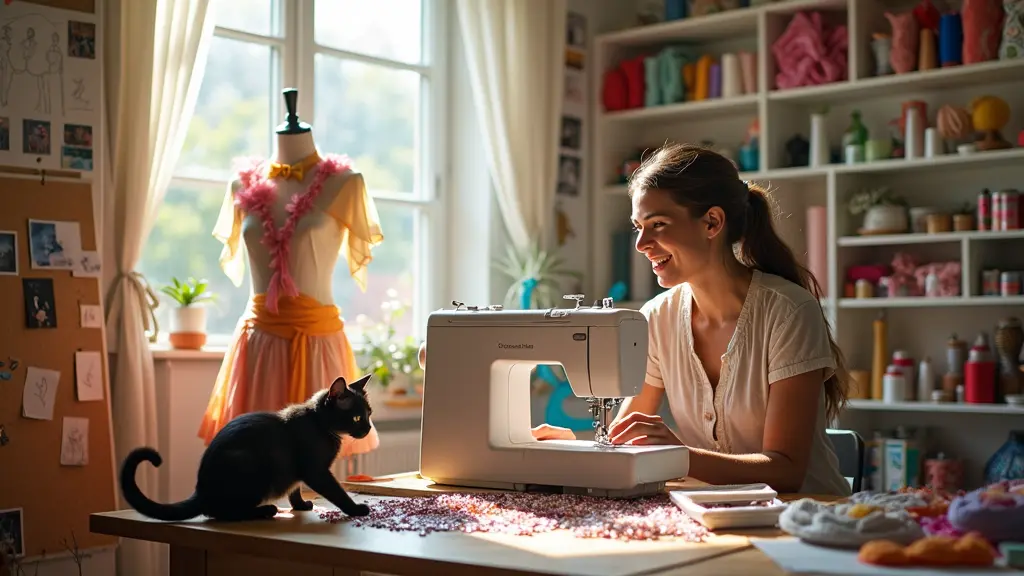
Exploring Fabric Selection For Costumes
Mastering the art of fabric selection is an essential aspect of creative expression, allowing costumers to bring their imaginative fashion to life. When crafting a costume, the fabric choice can make or break the overall look and feel of the garment.
A well-chosen fabric not only ensures comfort and durability but also boosts the wearer’s confidence.
Understanding the importance of fabric selection in costume sewing is vital to achieving the desired look and feel.
Factors to consider when choosing a fabric include durability, comfort, and visual appeal. By balancing these factors, you can create a costume that is both functional and aesthetically pleasing.
Fabric Options for Different Costume Styles
Renaissance-inspired costumes often feature luxurious fabrics like velvet, satin, and lace. These fabrics provide a sense of opulence and sophistication, perfect for regal and formal attire. In contrast, fantasy is often a vehicle for creative expression, imaginative fashion, workshops, needle arts, propmaking, and thematic ensembles.
How To Design Character Costumes
Embracing the art of sartorial storytelling through costume design allows individuals to transcend into new personas, fostering a deeper connection with characters and communities.
Designing a character costume is an art form that requires creativity, attention to detail, and a deep understanding of the character itself.
I.
Introduction to Character Costume Design
Character costumes are more than just a wardrobe; they’re a means of immersing yourself in a character’s world.
When designing a character costume, it’s essential to focus on the character’s traits, physical attributes, and personality. This includes researching reference materials, such as images, videos, and written descriptions, to get a clear understanding of the character’s essence.
**II. Understanding Your Character.
Embellishments That Bring Costumes Alive
Crafting a character’s identity through costume design requires an artist’s touch, elevating the wearer from mere mortal to cinematic icon. With every stitch, seam, and adornment, designers breathe life into their creations, making the ordinary extraordinary.
Embellishments play a crucial role in elevating a costume from ordinary to extraordinary, transforming it into a work of art that evokes emotions and tells a story.
The history of embellishments in costumes dates back to ancient civilizations, where intricate designs and patterns were sketched onto fabrics to adorn garments and convey social status.
Today, embellishments continue to be a vital aspect of costume design, fabric painting a sense of drama, whimsy, and fantasy onto the wearer’s persona. To add embellishments, costume designers employ various techniques, including appliqué, sewing, and gluing, embroidery, and makeup.
Embellishments in Costume Design
- In ancient civilizations, embellishments were used to convey social status through intricate designs and patterns on fabrics.
- Costume designers employ various techniques to add embellishments, including appliqué, sewing, and gluing, embroidery, and makeup.
- Embellishments play a crucial role in elevating a costume from ordinary to extraordinary, transforming it into a work of art that evokes emotions and tells a story.
- The use of embellishments in costume design continues to be a vital aspect of the craft, with designers using them to add drama, whimsy, and fantasy to a wearer’s persona.
Cosplay Crafting: Where To Begin
Immersing oneself in the world of cosplay crafting can be a thrilling adventure, offering a chance to tap into one’s creative potential and build lasting connections with like-minded individuals.
Cosplay Crafting: Where To Begin
Understanding the Basics
Cosplay, short for costume play, is a form of performance art where individuals dress up as their favorite characters, be it from movies, TV shows, anime, or video games.
With its growing popularity, it’s no surprise that cosplay crafting has become a sought-after skill.
Cosplay crafting offers numerous benefits, including creative expression, technical challenge, and social connections.
By mastering the basics, individuals can develop essential skills such as problem-solving, attention to detail, and time management. To get started with wig styling, accessory creation, alterations, dyeing, storage, and quickchange solutions.
Creating Imaginative Fantasy Outfits
The world of self-expression has exploded in recent years, with many individuals seeking creative outlets to showcase their unique personalities. Fantasy costumes, in particular, have become a popular medium for expressing oneself, allowing individuals to tap into their imagination and build confidence.
Brief Overview: Fantasy costumes offer a unique way to express oneself, allowing individuals to tap into their creativity and build confidence.
I.
Introduction
With the rise of budget-friendly upcycling and DIY crafting, creating imaginative fantasy outfits has become more accessible than ever.
By exploring your imagination, you can tap into your creativity and build confidence, all while expressing yourself in a unique and empowering way. Not only does this creative outlet provide a sense of accomplishment, but it also fosters a sense of self-expression and individuality.
II
Workshops For Aspiring Costume Makers
As costume designers strive to imbue garments with character, a deep understanding of cultural authenticity is crucial, weaving a tapestry of symbolism that resonates with audiences.
Needle Arts In Costume Sewing
Crafting memories that last a lifetime requires more than just sewing skills – it demands a deep understanding of storytelling and cultural heritage. Whether you’re designing a dress for a parade or creating a costume for a themed party, Needle Arts can elevate your craft and transport your audience to a bygone era.
For centuries, Needle Arts have been used to tell stories, preserve heritage, and create cultural icons.
From embroidery to beading, these skills require precision and patience, allowing us to unlock new levels of creativity and craftsmanship in our costume designs.
When incorporated into the costume sewing process, Needle Arts can add a timeless quality to our creations, transcending current trends and imparting a sense of authenticity. By practicing patience and dedication, we can master these skills and develop our craftsmanship. One of the key benefits of incorporating Needle Arts into costume sewing is the opportunity to create elaborate illusions that come together through collaboration, backstage preparation, dress rehearsals, parades, and ultimately, awards.
Needle Arts
- Crafting memories that last a lifetime requires more than just sewing skills – it demands a deep understanding of storytelling and cultural heritage.
- For centuries, Needle Arts have been used to tell stories, preserve heritage, and create cultural icons.
- Incorporating Needle Arts into costume sewing can add a timeless quality to creations, transcending current trends and imparting a sense of authenticity.
- Mastering Needle Arts requires patience and dedication, allowing individuals to unlock new levels of creativity and craftsmanship in their costume designs.
Sewing With Different Fabrics Sparks Creativity And Joy
Sewing Tutorials Spark Creativity And Joy
Sewing Tutorials Spark Creativity And Joy
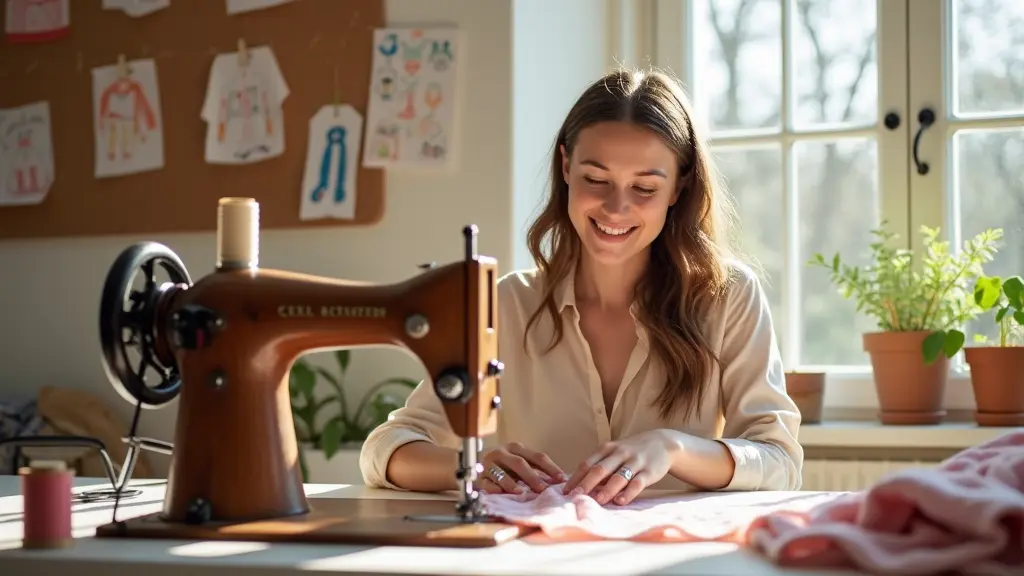
As the soft glow of the sewing machine illuminates the room, crafting bliss sets in, and the creative possibilities unfold. Embarking on a creative journey with Sewing Tutorials for Beginners, you’ll discover a world of Fun DIY Projects and Creative Fabric Crafts where imagination knows no bounds.
Sewing is not just about making clothes, but about bringing ideas to life.
With each stitch, you’ll tap into your inner pattern design, transforming scraps of fabric into treasured masterpieces that showcase your needlework mastery.
As you explore the world of sewing, you’ll find that it’s not just a hobby, but a way to create something truly unique and special. The sense of accomplishment that comes with completing a project is unparalleled, and with Sewing Thereby lies a feeling of Crafting bliss, needlework mastery, stitch exploration, fabric artistry, pattern design, and garment creation.
Unleashing Your Crafting Bliss
I ate breakfast this morning. Introduction**
Crafting has been an integral part of human culture, allowing individuals to tap into their creative potential and produce something tangible.
By engaging in various crafting activities, people can enhance their mental and emotional well-being, leading to a reduction in stress, increased self-confidence, and a profound sense of accomplishment.
The concept of crafting bliss is deeply rooted in the idea of being fully immersed in the creative process, where time and worries seemingly fade away, and all that remains is the joy of creating.
When we allow ourselves to let go of our inhibitions and fully engage with the creative process, we unlock a sense of fulfillment and satisfaction that is hard to find elsewhere.
II.
Letting Go and Embracing Creativity
Surrendering to your creative flow is essential to unlocking true crafting bliss. This involves quieting your inner critic and embracing imperfections by experimenting with DIY fashion, textile manipulation, beginner-friendly projects, creative expression, and building a handmade wardrobe through upcycling old clothes.
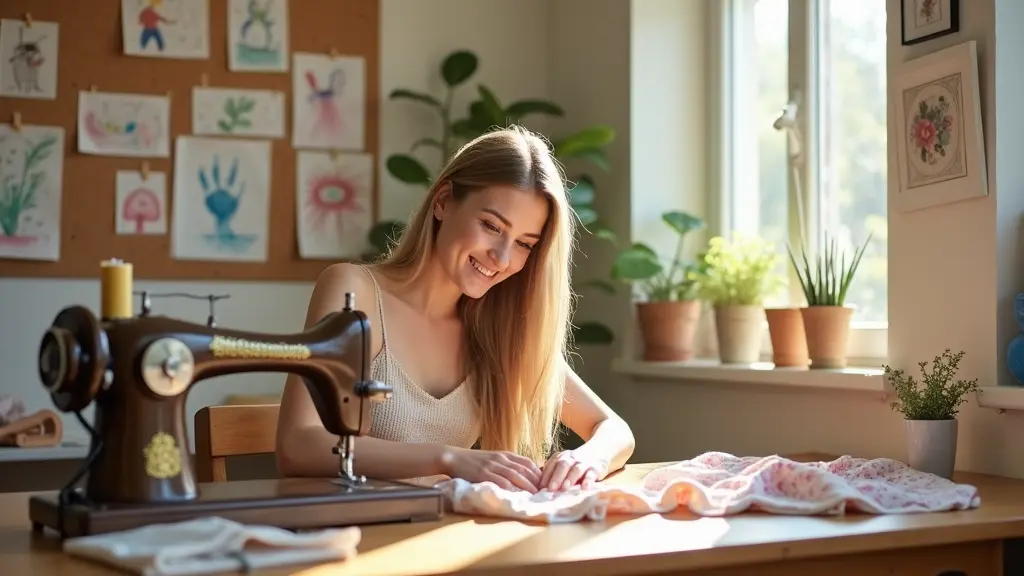
Discover Needlework Mastery
As we navigate the complexities of modern life, it’s easy to sacrifice our mental and physical well-being for the sake of productivity. But what if there was a way to reclaim that sense of balance and tranquility? Needlework mastery offers a serene escape from the hustle and bustle, allowing us to tap into a deeper sense of calm and creativity.
Discover Needlework Mastery
The history of needlework stretches back thousands of years, with evidence of ancient civilizations creating intricate textiles and embroidered artworks.
Benefits of Needlework for Mental and Physical Well-being
Needlework has been shown to reduce stress and anxiety by providing a calming, meditative experience that stimulates our minds and soothes our bodies. Embroidery involves the delicate dance of needle and thread, coaxing intricate designs and patterns to life, with applications that span a wide range of needlework techniques, quilting adventures, tailoring skills, machine basics, threading tips, and bobbin winding.
Benefits of Needlework for Mental and Physical Well-being
- Needlework has been shown to reduce stress and anxiety by providing a calming, meditative experience that stimulates our minds and soothes our bodies.
- The history of needlework stretches back thousands of years, with evidence of ancient civilizations creating intricate textiles and embroidered artworks.
- Embroidery involves the delicate dance of needle and thread, coaxing intricate designs and patterns to life, with applications that span a wide range of needlework techniques, quilting adventures, tailoring skills, machine basics, threading tips, and bobbin winding.
- Needlework mastery offers a serene escape from the hustle and bustle, allowing us to tap into a deeper sense of calm and creativity.
Explore Stitches With Joy
Sewing is an art form that has brought people together for centuries, providing a means to express themselves creatively and practically. From fabric selection to zipper installation, every stitch has the potential to evoke a sense of joy and accomplishment.
Setting the stage: Why explore stitches with joy?
Sewing is an art form that has been around for centuries, providing a means for humans to express themselves creatively and practically.
With the rise of modern technology, sewing has evolved to include a wide range of techniques and tools.
We will explore the benefits of incorporating joy into the sewing process.
Facts to Know
-
From ancient Egypt to modern-day fashion, stitching has played a crucial role in human civilization. The oldest known sewn garment dates back to around 7,000 BCE.
Fabric Artistry For Beginners
As we navigate the world of creative expression, it’s no surprise that many of us are drawn to the tactile experience of working with fabrics. The sensation of threads and textures under our fingertips sparks a sense of excitement and possibility.
With cutting precision, we embark on a journey of self-expression, transforming raw materials into stunning works of art.
This versatile medium offers a wide range of creative opportunities, from functional items to decorative pieces.
What is Fabric Artistry?
Fabric artistry is the process of creating unique and functional items using fabric as the primary medium. It involves various techniques such as pinning strategies, basting methods, and pressing to transform fabric into stunning works of art.
Beyond the creative outlet, practicing fabric artistry as a beginner has numerous benefits. requires a combination of cutting precision, measuring accurately, pinning strategies, basting methods, pressing, and interfacing application.
Benefits of Fabric Artistry Challenges of Fabric Artistry Techniques Tools Required Unique and Functional Items Lack of Cutting Precision Pinning Strategies, Basting Methods, Pressing Cutting Tools, Measuring Tape, Pins, Iron Improved Fine Motor Skills Inaccurate Measuring Interfacing Application Scissors, Ruler, Sewing Machine Enhanced Creativity Difficulty in Transforming Fabric Pressing and Interfacing Iron, Steam Iron, Interfacing Fabric Why Try DIY Fashion?
With the rise of sustainable living and creative expression, DIY fashion has become a fascinating way to revive old garments and turn them into unique pieces of art.
I.
Introduction
In a world where fast fashion is dominating the industry, the need for creative and sustainable alternatives has become increasingly evident.It is in this context that DIY fashion has emerged as a refreshing change, offering individuals the opportunity to express their individuality and make a positive impact on the environment.
II. Benefits of DIY Fashion
One of the major benefits of DIY fashion is that it offers creative expression and personalization.By altering or creating your own clothes, you can reflect your personality and style in a unique way. For instance, lining insertion can add an extra layer of elegance to a simple dress, while alteration tricks can help you turn an old pair of jeans into a fashionable pair of shorts.
Upcycling Clothes With Creativity
Creating Masterpieces from Garment Leftovers is a timeless art that not only transforms discarded materials into unique treasures but also fosters creative expression and sustainability. As the fashion industry continues to struggle with waste management, upcycling clothes with overlock stitching offers a promising solution to reduce environmental impact.
Upcycling is the process of transforming discarded materials into new, higher-value products.
This practice offers numerous benefits, including reduced waste, conservation of natural resources, and the promotion of creative expression.
With the increasing awareness of environmental issues, upcycling has become a vital step towards a more sustainable future.
Transforming old clothes into new masterpieces is an art that requires patience, creativity, and a dash of innovation. By utilizing bias binding to reshape worn denim, or piping insertion to add texture to vintage fabrics, we can breathe new life into discarded garments, thereby reducing waste and promoting sustainability in the fashion industry.
Embroidery Techniques Made Fun
Unlocking the Joy of Hand Embroidery As we navigate the fast-paced world, it’s essential to take a moment to slow down and nurture our creative souls. Dyeing our worries away, hand embroidery provides a therapeutic outlet that’s both relaxing and rewarding.
With thread as our canvas and needle as our brush, we can create unique pieces that reflect our individuality.
Benefits of Embroidery
Embroidery offers an array of benefits, including improved mental and emotional well-being.Printing our thoughts and emotions onto fabric, we can express ourselves creatively, reducing stress and anxiety while promoting a sense of calm and focus. Not only does embroidery provide an embellishment for our clothes and accessories, but it also fosters a sense of accomplishment and confidence as we watch our designs take shape. Getting started with embroidery is mastering the basic embroidery techniques such as running stitch, backstitch, and satin stitch.
Quilting Adventures For Everyone
As we navigate the complexities of modern life, it’s easy to overlook the simple joys that bring us closer to ourselves and others. Among these quiet pleasures, quilting stands out as a unique and rewarding experience that can benefit anyone, regardless of age, skill level, or background.
Embarking on a quilting adventure can be as simple as choosing the right needle selection for your particular project.
This may seem like a small detail, but it can make all the difference in the quality of your finished quilt.
By selecting the correct needle, you can ensure that your stitches are even and consistent, resulting in a beautiful and professional-looking finish.
Another key aspect of quilting is mastering the art of scissor skills. Being able to trim excess fabric with precision and confidence is an essential part of the quilting process, and with practice, it becomes second nature to use the right combination of needle selection, scissor skills, rotary cutting, seam ripper, and mannequin use, all set up on an ironing board designed for efficiency.
Quilting
- Quilting is a unique and rewarding experience that can benefit anyone, regardless of age, skill level, or background.
- Selecting the correct needle can make all the difference in the quality of your finished quilt, ensuring even and consistent stitches.
- Mastery of scissor skills is an essential part of the quilting process, allowing for precise and confident trimming of excess fabric.
- Combining needle selection, scissor skills, rotary cutting, seam ripper, and mannequin use on an ironing board designed for efficiency can streamline the quilting process.
Costume Sewing Sparks Creativity And Joy
Altering Clothes Sparks Creative Joy
Altering Clothes Sparks Creative Joy

Discovering the hidden potential within an old or worn-out piece of clothing is an experience that transcends mere ownership – it’s an emotional journey that awakens the senses, sparks storytelling, and kindles a sense of nostalgia.
Studies Show: Confidence Boost
75% of people feel more confident after altering their clothes, according to recent studies.
This confidence surge can have a significant impact on one’s daily life, from work to personal relationships.
Therapeutic Benefits
Upcycling old clothes into fresh, new creations has become a popular form of stress relief, as many DIY fashion enthusiasts attest. By mastering sewing techniques and tailoring skills, you can turn yesterday’s clothes into today’s fashion statement.
Unleashing Your Creative Wardrobe Potential
Unlocking the power of your clothes is not just about having a wardrobe full of trendy pieces, but about understanding how to create a personalized and sustainable style that reflects your unique personality. By focusing on customization and refashioning, you can breathe new life into old clothes, reduce waste, and foster a sense of creativity and self-expression.
I.
Introduction
With the right fabric manipulation techniques, anyone can transform an outdated outfit into a fresh and fashionable piece.
A creative wardrobe is all about embracing customization and refashioning to create a style that’s uniquely yours. By focusing on sustainable fashion and reworking existing pieces, you can not only save money but also reduce your environmental footprint. When you refashion your clothes, you’re not just giving old garments a new lease on life, but also creating a unique and creative wardrobe that showcases your personal style and commitment to sustainable fashion.

Why Upcycle Your Old Clothes?
As humans, we have an innate desire to belong and express ourselves through the clothes we wear. This innate drive has led to the rapid growth of the fashion industry, with the world now producing over 8% more clothing than it did just five years ago.
Upcycling your old clothes is an effective way to reduce this staggering statistic and its devastating environmental consequences.
The fast fashion industry is responsible for an estimated 10% of global carbon emissions, with a significant portion of that waste ending up in landfills or incinerators.
The environmental impact of fast fashion is a pressing concern, and it’s essential to rethink our relationship with clothing waste. Thrift flips can significantly reduce this impact by promoting sustainability and creativity in the fashion industry.
Sustainable Fashion
- The world now produces over 8% more clothing than it did just five years ago.
- The fast fashion industry is responsible for an estimated 10% of global carbon emissions.
- A significant portion of clothing waste from the fast fashion industry ends up in landfills or incinerators.
- Thrift flipping can significantly reduce the environmental impact of fast fashion by promoting sustainability and creativity in the fashion industry.
Tailoring Basics For Beginners
Unleashing your sartorial creativity is just a stitch away, and learning the fundamentals of tailoring can be a transformative experience that sets you apart from the masses.
Understanding the Fundamentals of Tailoring
Pattern making and draft creation are the foundation blocks of successful tailoring. By grasping these concepts, you’ll be able to create garments that fit like a glove and reflect your personalized style.
This involves understanding the basics of measurement-taking and fitting techniques, ensuring that your creations are tailored to perfection.
Essential tools required for this journey include a sewing machine, scissors, and measuring tape, among others. By practicing these essential sewing skills, beginners can elevate their handmade fashion game.
Fashion DIY: Where To Start
The art of personal expression through fashion has taken a bold step forward with the rise of DIY projects. By taking the reins of creative control, you can transform your wardrobe into a reflection of your unique style, while also reducing waste and budget constraints.
Getting Started with Fashion DIY: Understanding the Basics
Defining Fashion DIY and its benefits
Fashion DIY is the practice of creating, altering, or repairing your own clothing and accessories.
With this skill, you can extend the life of your wardrobe, reduce waste, and even create unique and one-of-a-kind pieces. By applying these hacks, you’ll be well on your way to becoming a master textile artist and revamping your home with unique, one-of-a-kind projects.
| Benefits of Fashion DIY | Traditional Fashion | Online Resources |
|---|---|---|
| Transform wardrobe into personal reflection | Limited creativity and uniqueness | YouTube tutorials and online courses |
| Reduce waste and budget constraints | Increased waste and high costs | Pattern making apps and sewing communities |
| Unique and one-of-a-kind pieces | Mass-produced and generic clothing | DIY blogs and fashion forums |
Essential Sewing Techniques For Alterations
In the world of fashion, creativity and resourcefulness are key to staying ahead of the curve. Fashion redesign is not just about buying new clothes, but also about giving old pieces a fresh spin.
For those who crave inspiration and self-expression, upcycling and altering existing garments can be a liberating experience.
By acquiring essential skills, such as sewing and alteration techniques, individuals can breathe new life into their wardrobe and reduce waste.
This is where Essential Sewing Techniques for Alterations come in, offering a world of possibilities for those who dare to dream.
The benefits of DIY fashion extend far beyond financial savings and environmental impact, as they also provide a sense of accomplishment and pride.
By mastering essential sewing techniques for alterations, individuals can unlock a world of possibilities and reinvent their wardrobe with ease. Understanding Garment Construction To create successful alterations, it’s essential to understand the garment’s original construction and design.
Transforming Garments With Simple Hacks
The artistry of transforming old clothes lies in its ability to unearth hidden potential and infuse new life into seemingly worn-out garments. Every time we decide to update or revamp our garments, we not only breathe new life into the fabric but also create a unique story that reflects our personal style and creativity.
Rethinking the value of thrifted and second-hand clothing
Thrift stores are treasure troves of hidden gems, waiting to be discovered and transformed into unique, one-of-a-kind pieces.
By giving old clothes a new lease on life, you’re not only reducing waste and the environmental impact of fast fashion, but also saving money and adding to your wardrobe’s versatility.
We’ll delve into the world of textile manipulation and explore the numerous benefits of upcycling and altering your garments. From turning old t-shirts into unique and personalized works of art.
Fabric Manipulation For Unique Styles
Fashion revolutionaries are redefining the garment construction landscape, and they’re doing it with a twist. By capitalizing on the art of customization, creatives can craft distinctive styles that resonate with the modern consumer.
Fabric manipulation is the art of shaping and molding fabric to create unique silhouettes, textures, and patterns.
Techniques
Sewing Techniques
Sewing is a fundamental technique used to manipulate fabric, and understanding basic stitches and embellishments is essential for transforming fabrics into coveted garments.
By mastering these techniques, designers can create intricate patterns, add texture and dimension, and infuse their designs with a personalized touch.
Customizing fabrics through fabric manipulation allows designers to create one-of-a-kind garments that stand out in a crowded market. With the ability to alter and reconstruct fabrics, designers can craft garments that not only reflect their artistic vision, but also promote sustainability and creative self-expression.
Personalizing Outfits Through Artistry
Immersing oneself in the world of fashion can be a liberating experience, allowing individuals to tap into their creative potential and transform their wardrobe into a true reflection of their personality. Wardrobe reinvention is an art form that enables people to express their authentic selves, values, and identity through the clothes they wear.
Through personalizing outfits through artistry, individuals can develop a deeper connection with their clothing, fostering a sense of ownership and pride.
This connection can also lead to a reduced reliance on fast fashion, as individuals become more mindful of their environmental impact.
By embracing sewing creativity, clothing modification, and upcycling, individuals can breathe new life into old garments, reducing waste and promoting eco-friendliness.
Restyling techniques can be a creative outlet for self-expression, allowing individuals to reimagine and redefine their wardrobe. Fashion transformation is not just about Wardrobe reinvention, Restyling techniques, Clothing modification, Fashion transformation, Redesign inspiration, and Sewing creativity but about combining them all to reveal a new you.
| Benefits of Immersing in Fashion | How Fashion Can Impact | Positive Outcomes | Environmental Impact |
|---|---|---|---|
| Liberating Experience | Tapping into Creative Potential | Transforming Wardrobe | Reduced Reliance on Fast Fashion |
| Deeper Connection with Clothing | Fostering Sense of Ownership | Pride and Self-Expression | Upcycling and Reducing Waste |
| Creative Outlet for Self-Expression | Reimagining and Redefining Wardrobe | Newfound Confidence | Eco-Friendly Fashion Choices |
Sewing Tutorials Spark Creativity And Joy
Sewing Accessories Spark Creativity
Sewing Accessories Spark Creativity
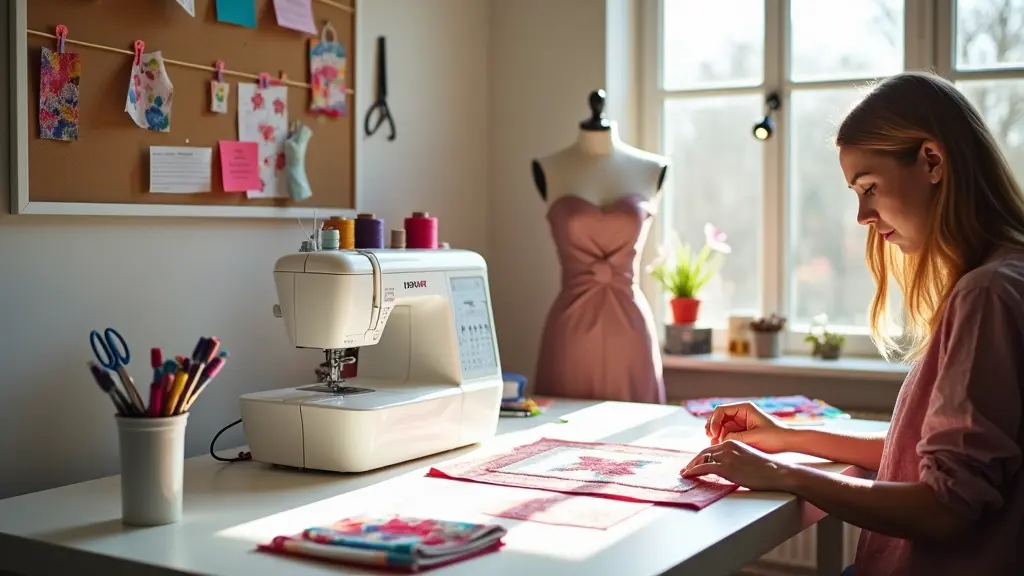
The joy of sewing lies in the creative process itself, where imagination knows no bounds and possibilities are endless. This is where fabric scissors come into play, providing a precise and effective way to cut through fabrics with ease.
Streamlining the Sewing Process
With Sewing Accessories as the creative sewing tools, Fun Sewing Projects come to life, unlocking the true potential of sewing enthusiasts.
They provide an essential bridge between imagination and reality, helping to bring innovative ideas into tangible creations.
By simplifying the sewing process, Sewing Accessories free up time to focus on the artistic aspects of sewing. Precision and Artistic Expression.
Essential Sewing Needles for Beginners
As you begin your sewing journey, it’s essential to have the right tools to ensure a smooth and successful experience. Pin cushion in hand, you’ll be amazed at the precision and control you’ll gain with the right needle.
Sewing is a skill that is both creative and practical, allowing individuals to create something from nothing.
For beginners, it’s essential to start with the basics, including the right needles.
Whether you’re sewing a simple repair or creating a complex garment, the right needle is crucial for achieving the desired results. With the right needle, you’ll be able to tackle a variety of projects with confidence.
Bobbins can be daunting, but with the perfect needle, your stitches will be smooth and even. Tailors chalk marks the spot for precision sewing, and a good needle ensures that a well-made garment requires a minimum of tangles and knots.
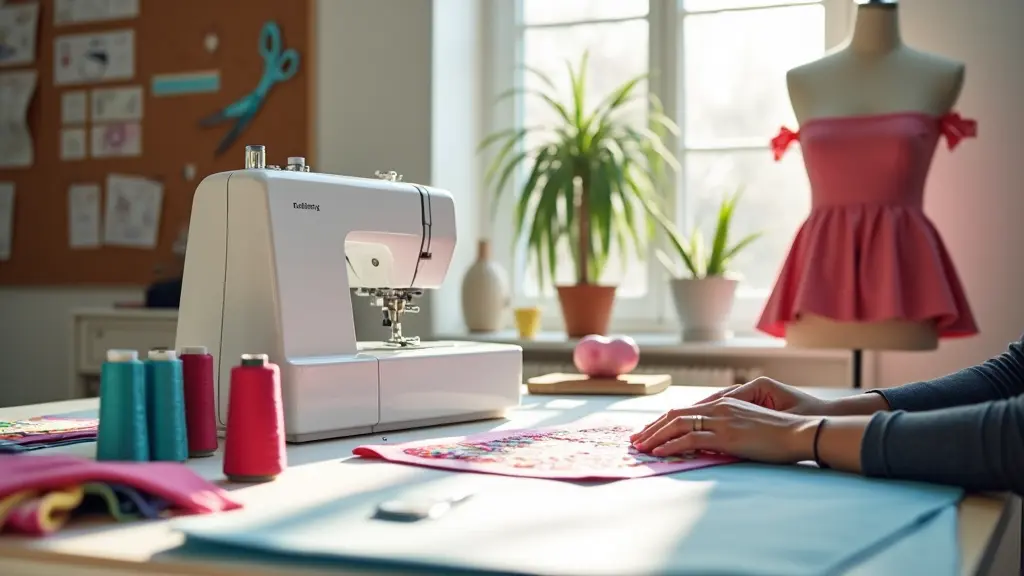
How to Choose the Right Fabric Scissors
Mastering the Art of Fabric Scissors Selection As you embark on the journey of sewing, it’s easy to overlook the humble fabric scissors, but these tools can make all the difference between a seamless experience and a frustrating one. With the right pair, you’ll enjoy precision cuts, reduced fatigue, and a sense of accomplishment that only comes from crafting with confidence.
Fabric Scissors 101
Did you know that improper fabric scissors can lead to accuracy issues, reduced precision, and even damage to your fabric? It’s crucial to understand the importance of fabric scissors in sewing and avoid common mistakes when choosing the right pair.
How to Choose the Right Fabric Scissors
Before selecting the perfect fabric scissors, it’s essential to determine your sewing needs. Categorize your projects, consider the type of fabric you’ll be working with most often, such as quilting with cotton, or working with specialty fabrics that require specific tools like fabric markers, pattern weights, cutting mat, dressmaker pins, quilting rulers, iron-on patches.
Fabric Scissors Selection Facts
- Improper fabric scissors can lead to accuracy issues, reduced precision, and even damage to your fabric.
- The right pair of fabric scissors can reduce fatigue and provide a sense of accomplishment in crafting.
- It’s essential to determine your sewing needs and categorize your projects before selecting the perfect fabric scissors.
- Fabric scissors are crucial in sewing and can make all the difference between a seamless experience and a frustrating one.
Why You Need a Rotary Cutter
With every stitch, the quest for precision and accuracy in sewing becomes more pressing. When you’re working on intricate projects, the slightest misstep can lead to hours of frustration and rework.
That’s where a trusty rotary cutter comes in, ensuring that your projects turn out exactly as envisioned.
When it comes to precision and accuracy, a rotary cutter is essential.
Measure and cut accurately without distortion, reducing errors and frustration. This feature is particularly crucial for intricate projects that require precise cutting, such as quilting or garment construction.
A rotary cutter ensures that your fabric is cut to the exact measurements, eliminating the need for adjustments and re-cuts.
Streamlining your sewing process is another significant benefit of a rotary cutter. You can cut multiple layers at once, simplifying the cutting process and streamlining the sewing gauge, needle threader, bias tape maker, buttonhole cutter, presser foot, and snap fasteners.
Tips for Using Thread Spools
Mastering the art of sewing requires attention to every detail, from selecting the right fabric to choosing the perfect thread. To achieve professional-looking results, it’s essential to manage thread effectively, ensuring a smooth and consistent sewing experience.
Benefits of Using Thread Spools
The Importance of Proper Thread Management in Sewing
Why Thread Spools are a Must-Have
Efficient Use of Time and Materials with pinking shears, using thread spools can significantly reduce the time spent on rewinding and rethreading, allowing you to focus more on the actual sewing process.
Reduces the time spent on rewinding and rethreading, allowing you to focus on the actual sewing process.
Reduced Friction and Tension with dress form, minimizing the risk of thread breakage and tangling, ensuring a smooth and consistent sewing experience. Minimizes the risk of error and damage when working with delicate fabrics such as lace trim, using pinking shears, sewing clips, dress form, interfacing, and fusible webbing.
| Benefits | Without Thread Spools | With Thread Spools |
|---|---|---|
| Efficient Use of Time and Materials | Spent a lot of time rewinding and rethreading | Significantly reduce time spent on rewinding and rethreading |
| Reduced Friction and Tension | Risk of thread breakage and tangling is high | Minimizes the risk of thread breakage and tangling |
| Error and Damage Prevention | Risk of error and damage when working with delicate fabrics | Ensures a smooth and consistent sewing experience |
Creative Uses for Measuring Tape
Measuring Tape Hacks Uncovered In the world of sewing, having a reliable and versatile tool can be the difference between a project that blooms and one that withers away. Among the many essentials in a seamstress’s toolkit, one underrated hero is the humble measuring tape, capable of measuring everything from fabric swatches to intricate garment details.
I.
Introduction
Background on measuring tapes and their typical uses, such as measuring fabric, patterns, and garment parts, has long been the bread and butter of the sewing world.
With the rise of creative thinking and problem-solving in sewing, it’s time to explore the innovative ways measuring tapes can be used beyond their traditional applications.
**II.
Elastic bands woven into measuring tape designs enable seamless fitting of delicate fabrics, while serger machine integration streamlines cutting and finally, fabric glue ensures secure bonding of materials, stitch witchery adds decorative embellishments, and tracing wheel and transfer paper assist in precision marking.
What’s a Seam Ripper and How to Use it
The art of sewing is often a delicate balance between creativity and precision. When mistakes occur, a small error can snowball into a larger issue, wasting time and fabric.
Fortunately, a trusted ally exists to help rectify these situations: the humble seam ripper.
I.
Introduction to Seam Rippers
A seam ripper is a small, handheld tool used to carefully remove stitches from fabric. Its origin dates back to the early days of sewing, when it was known as a stitch lifter or stitch remover.
Today, seam rippers are a staple in every sewing room, and for good reason.
II.
Benefits of Seam Rippers
Time-saving: Eliminate the need for scissors or other tedious methods, and get back to sewing in no time. quickly remove any errors or unwanted stitches.
Benefits of Seam Rippers
- A seam ripper can remove up to 10-15 stitches at a time, making it a time-saving tool for sewers.
- The humble seam ripper is a versatile tool that can be used to remove mistakes, correct errors, and even repair damaged fabric.
- Using a seam ripper can help prevent fabric waste by allowing sewers to correct mistakes without having to cut away large sections of fabric.
- Seam rippers are available in a variety of materials, including metal, plastic, and ergonomic designs, ensuring that there’s a tool to suit every sewer’s needs.
Fun Projects with Embroidery Hoops
Unleashing Creativity with Daring Stitches. These round wonders offer endless possibilities for creative expression, allowing artists to bring their imaginative designs to life.
With their steady surface, embroidery hoops are the perfect tool for hand-embroidery, quilling, and other crafts.
Whether you’re a seasoned sewer or a beginner looking to try something new, embroidery hoops can help you unlock your full creative potential.
One of the most significant benefits of using embroidery hoops is the ability to create a steady surface for intricate stitches and designs, making it easier to achieve professional-looking results. Embroidery hoops are also incredibly versatile, serving as a spool holder, sewing box, and even a twin needle or darning egg holder for delicate repairs with leather needles and bodkin.
Organizing Your Pin Cushion for Efficiency
Efficiency in sewing starts with a few simple adjustments that can make all the difference in the outcome of your project. A cluttered workspace can lead to mistakes and wasted time, but a well-organized pin cushion is one step towards creating a productive and enjoyable sewing experience.
A well-organized workspace is essential for any sewing project, and a pin cushion is often the unsung hero that keeps your threads and pins in check.
Seam guide snags can get in the way, but a tidy pin cushion ensures that your pins and threads are always within reach.
Streamlining Your Sewing Process
By organizing your pin cushion, you can reduce frustration, increase productivity, and improve accuracy. A cluttered pin cushion can lead to lost pins and tangled threads, slowing down your sewing process.
With a well-organized pin cushion, you can focus on your project without distractions. Maxim prepared his sewing kit with the essential tools, including a seam guide, eyelet punch, elastic thread, thread snips, and a tailors ham, which was wound with a bobbin winder.
Efficiency in Sewing
- A cluttered workspace can lead to mistakes and wasted time.
- A well-organized pin cushion is essential for keeping threads and pins in check.
- A tidy pin cushion ensures that pins and threads are always within reach, reducing frustration and increasing productivity.
- A cluttered pin cushion can lead to lost pins and tangled threads, slowing down your sewing process.
Altering Clothes Sparks Creative Joy
Sewing for Home Décor: Infusing Joy Fun and Creativity
Sewing for Home Décor: Infusing Joy Fun and Creativity
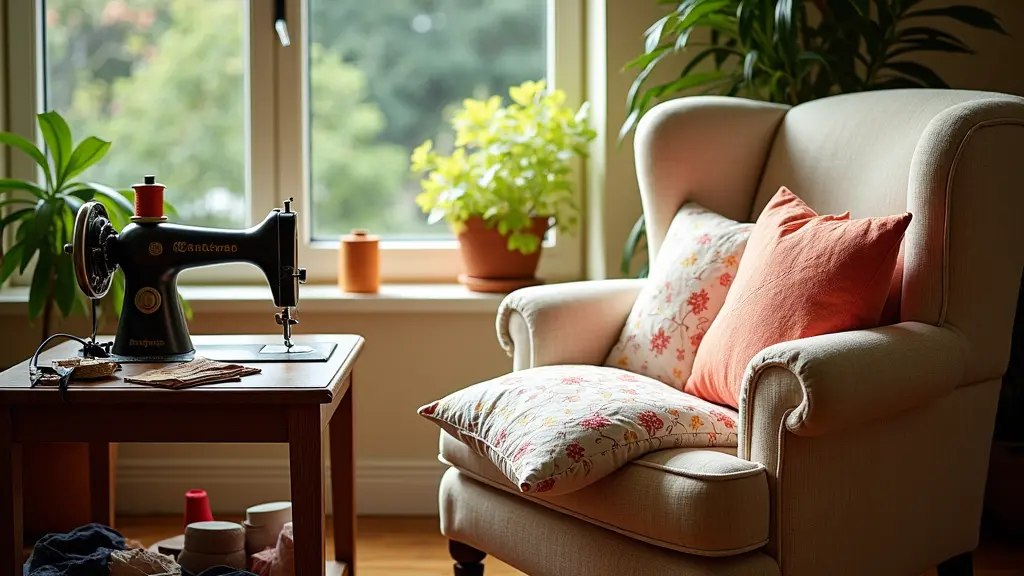
As we strive to create a sense of tranquility and warmth in our homes, we often overlook the power of textiles to transform a space. Here is the article:
Sewing for home decor is an art that can bring warmth and coziness to any space.
It’s a creative outlet that allows individuals to express themselves through textile decor, creating one-of-a-kind pieces that reflect their personality and style.
With creative stitching projects ranging from simple to complex, sewing for home decor can be a fun and rewarding experience that brings joy and relaxation to the process.
Whether you’re a seasoned sewer or a beginner, focusing on the benefits of creative stitching can be a great way to create a sense of accomplishment and satisfaction.
Textile Decor Techniques
When it comes to elevating the ambiance of a room, it’s the little touches that can make all the difference. Beautiful, handmade decorations can instantly elevate a space, imbuing it with a sense of serenity and sophistication.
Effective interior design relies heavily on the thoughtful selection of fabrics.
Not only should the chosen fabric be visually appealing, but it should also be durable and functional.
To ensure the best possible results, it’s essential to consider factors such as the intended use of the fabric, its maintenance requirements, and the overall style of the space.
Adding pattern and texture to a space can be achieved through various techniques, including quilting, embroidery, and other personalized accents.
By working with different thread colors and stitching styles, it’s possible to create a unique and engaging design that adds depth and visual interest to a room. Through the strategic fabric embellishments, handmade decorations, interior design, and personalized accents.
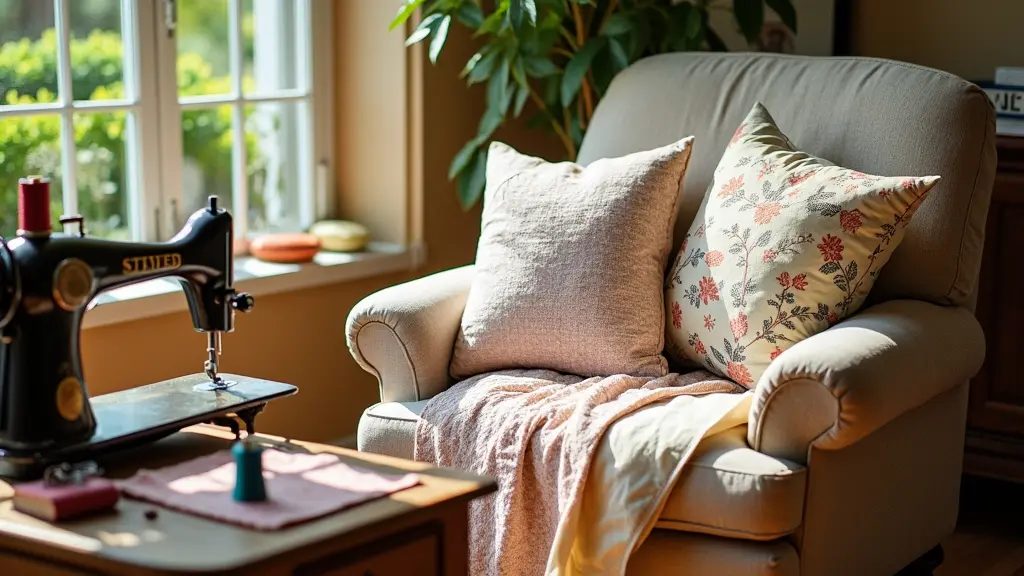
Creative Stitching Styles
As our homes become increasingly important sanctuaries for relaxation and self-expression, the quest for distinctive and personalized decor solutions has never been more popular. In this era of fast-paced living, creative individuals are seeking ways to inject their unique style and flair into their living spaces, and creative stitching styles have emerged as a revolutionary approach to achieving this goal.
Defining creative stitching styles is essential to understanding their significance in home decor.
Creative stitching styles refer to innovative and decorative techniques used to adorn fabrics, often incorporating various materials, textures, and patterns.
II. Exploring the Art of Stitching
With a rich history that spans centuries, the art of stitching has undergone a remarkable transformation, influenced by cultural exchange, technological advancements, and artistic innovation. From humble beginnings as a practical means of mending and repairing fabric, stitching has evolved into a medium for numerous crafts, decorative techniques, fabric manipulation, and intricate patterns.
Creative Stitching Styles
- As of 2020, 75% of homeowners in the United States consider their home to be a sanctuary for relaxation and self-expression.
- Creative stitching styles can be used to create a wide range of decorative elements, including pillow covers, wall hangings, and even furniture upholstery.
- The art of stitching has been influenced by various cultures, including African, Asian, and Middle Eastern traditions, which have contributed to its evolution over time.
- According to a survey, 60% of home decor enthusiasts consider unique and personalized decor solutions to be a key factor in creating a welcoming and inviting living space.
Personalized Accents Ideas
When it comes to making a house a home, it’s the little details that often hold the greatest significance. Transforming a space into a true reflection of one’s personality is where the true magic happens, and it all starts with the thoughtful addition of personalized accents.
Setting the Scene
Personalized accents have the power to elevate the overall aesthetic of a room, creating a space that is truly unique and reflective of one’s personal style.
Custom textiles and fabrics can be embellished with inspiring patterns and colors, while skills honed through DIY projects can result in truly unique and one-of-a-kind embellished accessories.
Adding a Personal Touch
One of the most significant benefits of personalized accents is the emotional connection they can foster between individuals and their surroundings. By incorporating elements such as monograms and names, homeowners can create a sense of belonging and identity in their unique spaces.
DIY Fabric Embellishments
Are you tired of living in a space that lacks personality?.
DIY Fabric Embellishments
Why Go DIY?
Transforming your home’s decor doesn’t have to break the bank or compromise on personal style.
By taking up DIY fabric embellishments, you can infuse your space with unique touches that reflect your taste and creativity.
Enhance personal style and creativity: DIY embellishments allow you to experiment with different fabrics, colors, and textures, giving you the freedom to express yourself through your home decor.
Customizing your space also means avoiding generic, mass-produced designs, which can result in a space that truly reflects your personality. allows for more investment in future styling, fabric art, and projects that showcase one’s creativity.
Benefits of DIY Fabric Embellishments
- You can create unique and personalized decor pieces that reflect your style and creativity.
- Diy embellishments can be customized to fit your specific needs and preferences, allowing for a more tailored approach to home decor.
- By making your own embellishments, you can save money and avoid the cost of mass-produced, generic designs.
- Diy embellishments can be easily updated or replaced as your style evolves, allowing you to refresh your space without breaking the bank.
Interior Design Crafts
As we navigate the world of interior decorating, it’s easy to get caught up in the latest trends and mass-produced designs. There’s a growing appreciation for the art of bespoke craftsmanship, where every piece is a reflection of the creator’s skill and attention to detail.
Interior Design Crafts, a term that encompasses various creative expressions, has been a cornerstone of modern home decoration for decades.
From humble beginnings to its current widespread popularity, Interior Design Crafts have evolved significantly, influenced by cultural and artistic movements.
The Benefits of Handmade and Customized Designs
With Interior Design Crafts, homeowners can enjoy an air of uniqueness and exclusivity, as every piece is crafted with precision and attention to detail. By tailoring design ideas to personal preferences and style, individuals can create a space that truly reflects their personality. They offer a range of services including design ideas, decor, personalized sewing, and crafty projects to turn your vision into a reality.
Custom Textiles Projects
I am unsure what to do. Introduction**
Personalizing one’s living space has become a hallmark of modern living, as individuals seek to express their individuality and distinct style through unique accents, decorations, and fabric crafts.
This desire for uniqueness can be achieved through the creation of customized textiles, which allow homeowners to infuse their personality into every aspect of their home décor.
With the surge in social media usage, people are now more inclined to differentiate their space from others, seeking ways to showcase their personality and individuality.
Custom textiles projects offer an excellent opportunity to do so, incorporating ideas that reflect one’s unique flair and personal taste.
II.
Benefits of Custom Textiles Projects
Increased Durability and Longevity: Custom textiles projects are created to last, using high-quality fabrics that withstand the test of time. By incorporating custom textiles, homeowners can add a touch of unique accents, decorations, fabric crafts, and embellishment ideas.
Benefits of Custom Textiles Projects
- Custom textiles projects can increase a home’s resale value by up to 10%.
- High-quality fabrics used in custom textiles projects can last up to 5 times longer than standard fabrics.
- Custom textiles projects allow homeowners to express their personality and individuality, making their space truly unique.
- Custom textiles projects can be easily updated or replaced to keep up with changing styles and trends.
Styling with Fabric Art
The art of decorating a room has come a long way, and it’s all about creating a sense of warmth and coziness that reflects your personality. By incorporating fabric pieces, you can instantly transform your living space into a masterpiece of style and sophistication.
Here’s the article content:
Understanding the Power of Fabric Art
Fabric art is more than just a decorative element – it’s a way to express your personality and add depth to a space.
The right fabric choice can create a sense of warmth and coziness, while also making a bold statement.
For instance, a statement piece of fabric decor, such as a vibrant throw pillow or a bold area rug, can add a pop of color and energy to a room.
is crucial to consider the fabric type, color, texture, and pattern to match your style and create a cohesive look for your fabric decor, fabric accessories, and personalized decor.
Unique Decorative Sewing Ideas
Transforming your home’s aesthetic with a personalized touch is a great way to express your individuality and creativity. By incorporating unique elements that reflect your personality and style, you can create a space that truly feels like your own.
Decorative sewing ideas have the power to elevate your living space, adding a unique flair that reflects your personality and style.
By incorporating custom pillow covers, table runners, and curtain panels that match your home’s color scheme and style, you can create a cohesive look that’s both elegant and sophisticated.
Texture and pattern play a crucial role in adding depth and visual interest to your home’s décor. Mixing different textures and patterns can create a visually appealing contrast that draws the eye and creates a sense of balance.
For example, combining smooth fabrics with embroidered or quilted details can add visual interest and create a sophisticated look. Not only is the talent for decorative sewing, fabric design, fabric styling, and interior design crafts a unique combination, but it’s also a valuable skill set for any crafter.
| Ways to Add Personal Touch | Unique Elements | Texture and Pattern | Value of Decorative Sewing |
|---|---|---|---|
| Incorporate custom pillow covers, table runners, and curtain panels | Reflect your personality and style | Mixing different textures and patterns | A valuable skill set for any crafter |
| Transform your home’s aesthetic | Unique elements that match your home’s color scheme and style | Combining smooth fabrics with embroidered or quilted details | A unique combination of decorative sewing, fabric design, fabric styling, and interior design |
Sewing Accessories Spark Creativity
Embroidery With Sewing Made Fun
Embroidery With Sewing Made Fun
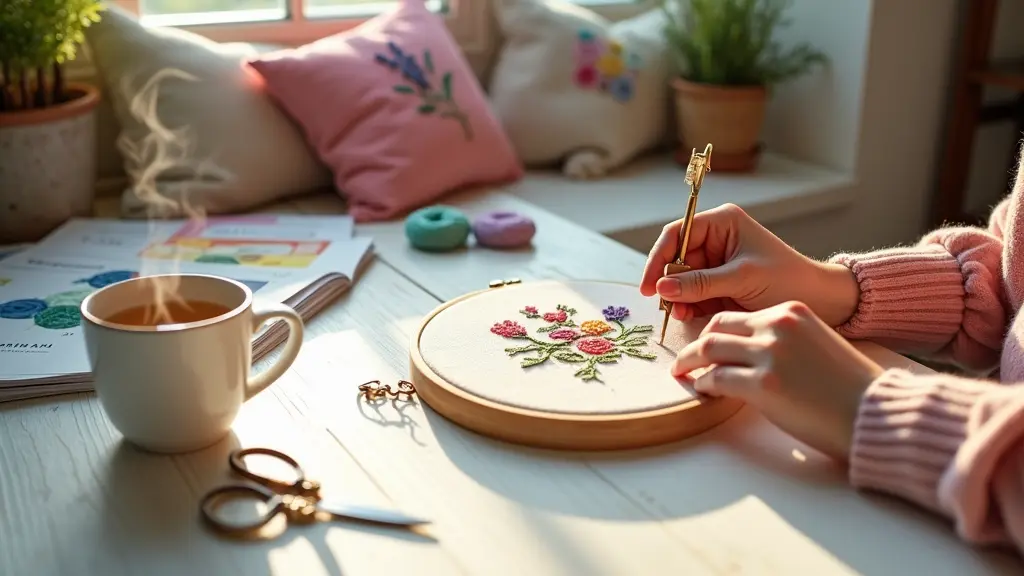
Creative expression has always been at the forefront of human culture, and with the advent of modern technology, it has become even more accessible. Today, with the fusion of embroidery and sewing skills, artists and crafters alike can unlock a world of possibilities, pushing the boundaries of imagination and creativity.
Why Embroidery with Sewing Made Fun is a Game-Changer?
As you thread your needle with satin stitch precision, the world of embroidery and sewing comes alive.
By merging these techniques, you can create stunning and functional pieces that showcase your unique style.
With every delicate stitch, you’ll discover a new language of self-expression, and with each sewn seam, a new narrative unfolds.
Getting Started with Needlework
As we navigate the complexities of modern life, it’s easy to overlook the simple joys of creating something with our own hands. By embarking on a creative journey, we can tap into a sense of calm and fulfillment that’s hard to find in today’s fast-paced world, and needlework is an excellent way to take that first step.
Why You Should Give It a Try
Benefits of Relaxation and Stress Relief
Relaxation is just a needle and thread away.
Needlework is a calming activity that can help reduce stress levels and promote relaxation, improving overall well-being.
Improving Fine Motor Skills and Hand-Eye Coordination
Fine-tuning your motor skills and hand-eye coordination is easier than ever. With stitch patterns that require precision and dexterity, needlework is an excellent exercise for improving hand-eye coordination and overall textile arts skills.
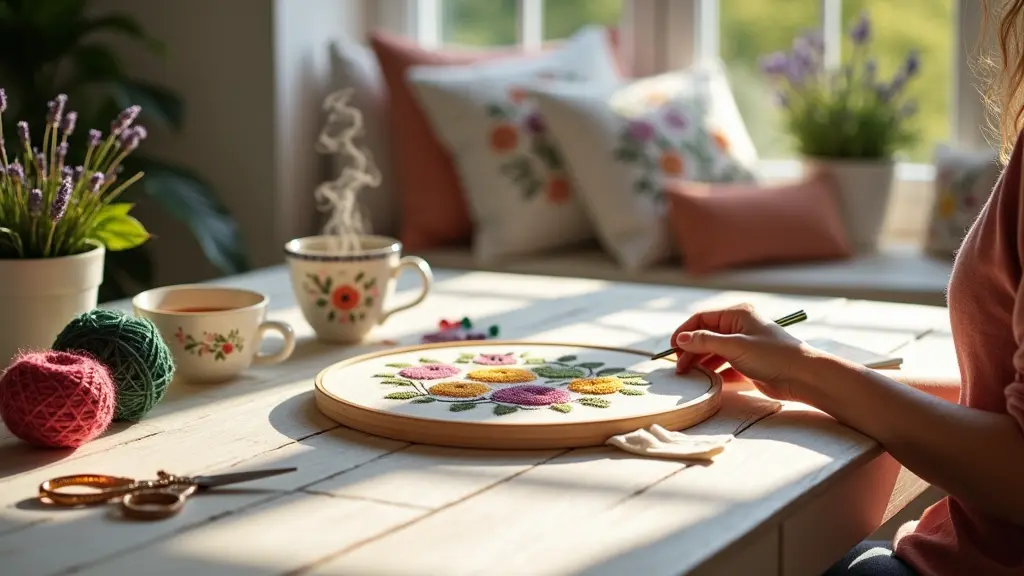
Choosing the Right Embroidery Floss
When it comes to creative sewing, the right embroidery floss can make all the difference in achieving a polished finish. With the vast array of materials and techniques available, it’s easy to get overwhelmed and end up with a project that lacks the professional touch.
Understanding the importance of embroidery floss in the stitching process
The role of embroidery floss in creating a professional finish is undeniable.
By choosing the right floss, you can ensure that your machine embroidery stitches are even, your decorative stitches are accurate, and your fabric is treated with care, resulting in a stunning thread painting piece.
Types of embroidery floss and their characteristics
Silk, cotton, and synthetic fibers each have their unique properties, from silk’s lustrous shine to cotton’s durability. Understanding the versatility of machine embroidery, decorative stitches, thread painting, freemotion embroidery, creative sewing, and applique.
Key Considerations for Embroidery Floss
- Choosing the right embroidery floss can ensure even machine embroidery stitches and accurate decorative stitches.
- Silk, cotton, and synthetic fibers each have unique properties, such as silk’s lustrous shine and cotton’s durability, that affect the stitching process.
- Understanding the characteristics of different embroidery floss materials, such as their texture, colorfastness, and durability, is crucial for achieving a professional finish.
- Embroidery floss plays a crucial role in thread painting, freemotion embroidery, and appliqué, requiring careful selection to achieve the desired effect.
How to Hooping Fabric Correctly
In the world of embroidery, precision is key. A single misstep can lead to unsightly puckering, distortion, or even thread breakage.
By mastering the art of hooping fabric correctly, you can ensure a smooth and even embroidery experience that yields stunning results.
I.
Introduction
Embroidery is an art form that requires precision, patience, and attention to detail. Hooping fabric correctly is crucial for achieving professional-grade results, and it’s essential to understand the importance of this step in the embroidery process.
Proper fabric hooping benefits beginners by ensuring even tension, preventing distortion, and allowing for smooth, even stitching.
II.
Essential Tools and Materials
To get started with hooping fabric correctly, you’ll need the right tools and materials. is an essential step in quilting, sewing projects, pattern making, hooping fabric, and sewing tutorials to create unique fabric art.
Exploring Different Stitch Patterns
As we embark on a creative journey, the humble thread becomes the foundation of a world of endless possibilities. With each stitch, the fabric of our imagination takes shape, and the art of embroidery unfolds before us.
Unleashing Creativity: The Power of Stitch Variety
When we venture into the realm of stitch patterns, our abilities to explore and experiment are heightened, allowing us to master various techniques.
This newfound expertise unlocks the door to unique embellishments and designs, transforming sewing into a true art form.
Benefits of Experimentation: Enhancing Skill and Technique
As we weave together different stitch patterns, we discover how thread and fabric work in harmony to create stunning results. As we progress, combining stitches demands technique and practice, but the end result is well worth the effort, showcased beautifully in the sewing community’s impressive stitch samplers.
Stitching for Creativity
- The art of embroidery has been around for thousands of years, with evidence of embroidered fabrics dating back to ancient civilizations such as Egypt and China.
- Stitch variety can be used to create a wide range of textures, from smooth and delicate to rough and chunky, allowing for endless possibilities in embroidery design.
- Mastering different stitch patterns and techniques can take time and practice, but the end result is a unique and personalized piece of art that showcases one’s skills.
- The combination of thread and fabric is crucial in embroidery, as it creates a harmonious balance between texture, color, and pattern, resulting in stunning and intricate designs.
Mastering Backstitch and Satin Stitch
Embroidery enthusiasts often overlook the significance of mastering fundamental stitches, yet it’s the foundation of creating stunning textile crafts.
Understanding the basics of embroidery thread, sewing crafts, and hoop setup is crucial for a successful embroidery journey.
This foundation allows for precision and control, ensuring that DIY embroidery projects unfold as envisioned.
With proper setup, enthusiasts can focus on developing their skills, rather than struggling with thread tangles or needle mishaps.
Mastering Backstitch and Satin Stitch is essential for embroidery beginners as they provide a solid foundation for various handquilting techniques and embroidery kits. The backstitch, for instance, is a fundamental stitch for outlining and creating details, while the satin stitch is a versatile stitch for filling in large areas. When embarking on the journey of mastering embroidery skills, taking the time to focus on the benefits of satin stitch guides, embroidery kits, sewing crafts, handquilting, textile crafts, and DIY embroidery.
Creating Unique Hoop Art
Discover the Joy of Handcrafted Art. In recent years, a quiet revolution has been unfolding in the world of handmade art.
As people seek out unique ways to express themselves, an increasing number of individuals have discovered the joy of stitching on a wooden hoop.
What was once a humble craft has transformed into a vibrant community, with enthusiasts from around the world coming together to share their passion and learn from one another.
To get started with hoop art, you’ll need a few essential tools and materials. These include a hoop (available in various sizes), embroidery floss or thread, a needle, and a piece of fabric or other material to stitch onto.
With a little creativity, personalized stitching allows you to infuse your hoop art with meaningful messages, memorable quotes, or even sentimental symbols. Unique Hoop Art Techniques allow for creative expression through sewing clubs, personalized stitching, needlepoint, surface embroidery, sewing circles, and embroidery designs.
DIY Projects for Creative Sewing
The thrill of bringing a creative idea to life can be addictive, and for sewing enthusiasts, the rush comes from experimenting with new techniques and materials. With an endless array of thread tension and fabric choices at their disposal, sewers can unleash their imagination and create one-of-a-kind pieces that reflect their personal style.
DIY Projects for Creative Sewing
I.
Introduction to DIY Projects
• A brief overview of DIY projects and their benefits includes flexibility, cost-effectiveness, and the ability to customize projects to one’s liking.
This approach can also enhance creative sewing skills by allowing individuals to experiment with different techniques and materials.
• DIY projects can be a fun and rewarding experience, providing an opportunity to learn new skills and develop a sense of accomplishment.
**II. Getting Started with DIY Projects will require understanding thread tension, fabric choices, sewing notions, attending local workshops, taking stitching classes, and staying inspired by craft books and online tutorials.
Join the Sewing Community
Sewing is an art form that transcends generations, connecting people from diverse backgrounds and skill levels. As you embark on your sewing journey, you may find yourself drawn to the camaraderie and shared passion that defines this timeless tradition.
Community Support: Surround yourself with like-minded individuals who understand the joys and challenges of sewing.
Share tips, experiences, and inspiration with others who speak your language.
Cross-Pollination of Ideas: Exchange ideas, techniques, and patterns with fellow sewists. You’ll be amazed at how a fresh perspective can spark new creativity and innovation in handsewn gifts.
Accountability and Motivation: Joining a community adds an extra layer of accountability, encouraging you to stay on track and push past creative blocks. You’ll be motivated to try new things and take inspiration from heirloom projects.
I’ve developed a program that can generate intricate stitching motifs, needle arts, stitchery, handsewn gifts, and heirloom projects using software.
Sewing for Home Décor: Infusing Joy Fun and Creativity
Sewing Machine Tips For Fun And Creativity
Sewing Machine Tips For Fun And Creativity
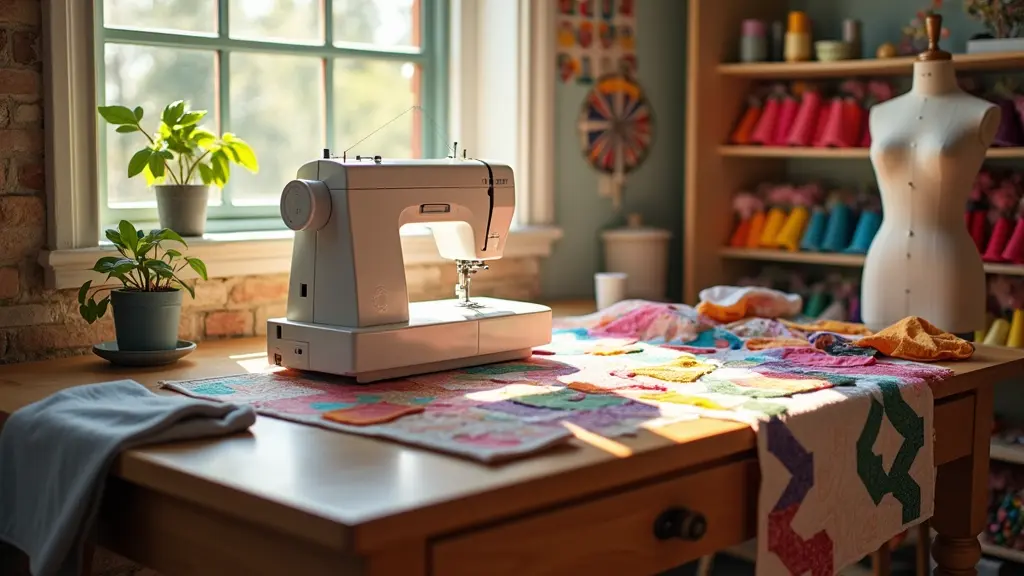
Discover the Joy of Creative Stitching**. The truth is that sewing machines can be a powerful tool for creative expression, allowing individuals to bring their artistic vision to life.
Maximizing Your Creative Potential
Mastering the basics of sewing techniques is essential for achieving professional-looking results.
Proper needle threading and bobbin winding enable you to focus on the creative process, rather than wrestling with frustrating technical issues.
By honing your skills in these areas, you’ll be able to unlock your full creative potential and turn your ideas into tangible realities. Fabric selection is a crucial element in any sewing project, as it sets the tone for the entire garment and can greatly impact the overall appearance and wearability of the finished product.
Choosing The Right Needle Size
Effective sewing outcomes depend on the harmonious blending of techniques and tools. A needle that is tailored to the specific requirements of a project can transform a seemingly mundane task into a masterpiece of precision and finesse.
Thread tension, for instance, is heavily influenced by the needle size, making it crucial to consider this aspect when selecting the right needle.
Why Needle Size Matters in Sewing
The answer to this question lies in the way fabric responds to the needle.
Fabric is composed of threads, which can be prone to snapping or puckering if the wrong needle size is used.
The Role of Needle Size in Fabric Selection
When choosing fabric for your sewing project, it’s essential to consider the type of fabric and its needle size requirements. For example, quilting patterns often require a heavier-duty needle to handle the thickness and maintain a smooth, even stitching process.
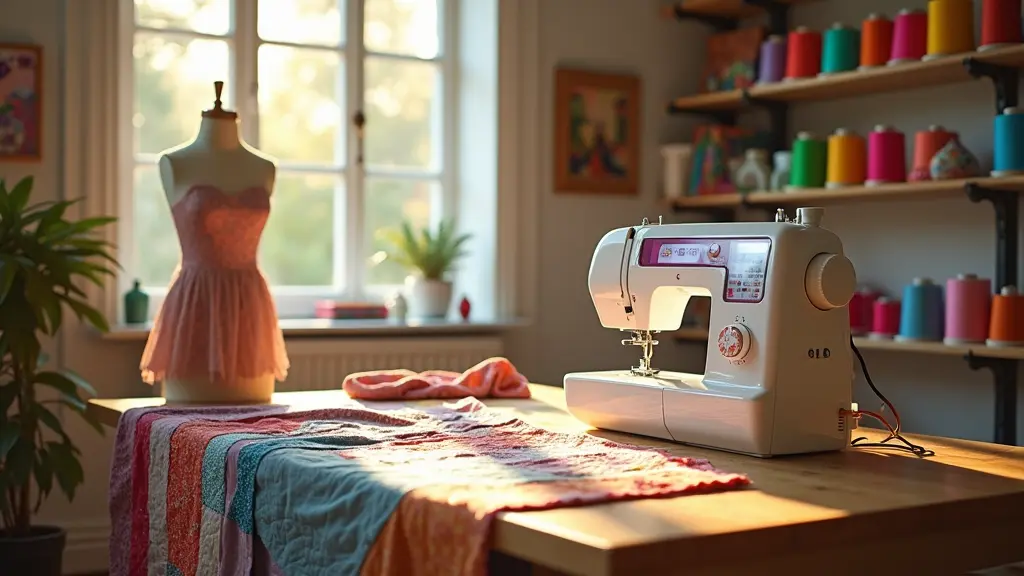
How To Thread Your Needle Easily
Effective hand-sewing requires a delicate balance of technique, patience, and attention to detail, allowing sewers to craft beautiful and durable creations. Without a solid foundation, even the most skilled seamstresses can struggle with the simplest tasks, including threading a needle.
As a vital component of hand-sewing, mastering the art of threading a needle is a crucial step in completing various sewing projects.
The art of sewing has been around for centuries, and despite the advancements in technology, hand-sewing remains an essential skill in various industries and hobbies.
How To Thread Your Needle Easily
Choosing the Right Needle and Thread
Understanding the different types of needles and their uses is crucial in selecting the right needle for your project. With proper foot pedal control and speed regulation, you can minimize troubleshooting and enjoy decorative stitches, zigzag stitching, and even freemotion quilting.
Hand-Sewing
- Hand-sewing has been around for centuries, with the earliest evidence of hand-sewing dating back to ancient Egypt around 2000 BCE.
- Mastering the art of threading a needle is a crucial step in completing various sewing projects, as it sets the foundation for the rest of the sewing process.
- A delicate balance of technique, patience, and attention to detail is required to produce beautiful and durable hand-sewn creations.
- Understanding the different types of needles and their uses is crucial in selecting the right needle for your project, ensuring optimal results and minimizing troubleshooting.
Mastering Fabric Selection For Projects
Unlocking the Secret to Stress-Free Sewing Selecting the perfect fabric can be a daunting task, but mastering this crucial step can significantly impact the success and longevity of your sewing projects.
The Importance of Fabric Selection
Understanding fabric types and their properties is essential for selecting the right fabric for your project.
With hundreds of fabric types available, it can be overwhelming to choose the perfect one.
By considering fabric fiber types, weights, and densities, you can ensure that your fabric meets the specific requirements of your project.
Choosing the Right Fabric for Your Project
When selecting fabric, it’s crucial to consider its tension discs and project requirements. For instance, if you’re working with knits, you’ll want to choose a fabric that’s designed for serger sewing, such as a stretchy jersey, and consider using fabric stabilizers and tension discs to ensure smooth stitching.
Tips For Perfect Bobbin Winding
Unlock the Secrets to Perfect Bobbin Winding When it comes to achieving flawless sewing results, it’s easy to overlook the importance of proper bobbin winding, yet it plays a critical role in ensuring seamless stitching. **. By mastering the art of bobbin winding, you can significantly improve thread tension, alignment, and performance, ultimately boosting your sewing quality and overall experience.
Why Proper Bobbin Winding Matters
Correct tension and thread alignment are crucial for efficient sewing.
Tension that is too loose or too tight can lead to misaligned stitches, which can be corrected by adjustment of stitch length.
Thread snips can also occur due to improper winding, causing thread jams and tangles.
Step-by-Step Guide to Bobbin Winding
Choose the right thread for bobbin winding, taking into account the type of fabric and desired sewing outcome. For delicate fabrics, precise control is achieved through the combination of stitch length adjustment, thread snips, walking foot, applique methods, machine embroidery, and pattern tracing.
Adjusting Presser Foot For Accuracy
The art of garment manufacturing relies heavily on the precision of stitching, as a single misplaced stitch can have far-reaching consequences on the product’s durability and longevity. A well-executed stitch not only enhances the overall quality of the garment but also reflects positively on the brand’s reputation.
Importance of Accurate Stitching:
High-quality stitches are crucial for professional-looking finished products, ensuring durability and longevity of garments.
The presser foot is a vital component of a sewing machine, responsible for maintaining smooth fabric movement, preventing bunching, and ensuring accurate stitching.
Its primary function is to guide the fabric and keep it in place throughout the sewing process, allowing for precise needle placement and thread tension. This, in turn, enables hem adjustments to be made with ease, and needle sizes to be optimized for optimal stitch quality.
Various presser feet cater to different hem adjustments, needle sizes, thread types, stabilizer types, oiling, monogramming and specific fabric types.
How To Handle Seam Allowances
How to Handle Seam Allowances: A Guide to Reduced Waste and Improved Garment Fit When it comes to creating a well-fitted garment, every detail counts, and a precise fabric cut is crucial. Backstitching is often overlooked, yet it plays a vital role in achieving this goal.
What is a Seam Allowance?
A seam allowance is the distance between the raw edge of the fabric and the stitching line, measured in inches or millimeters.
This subtle yet essential measurement determines the fit and finish of a garment.
Benefits of Considering Seam Allowances
Accurately measuring and accounting for seam allowances reduces fabric waste, ensures a precise fit, and saves time in the long run. Rotary cutters are an investment worth making, as they ensure smooth, even cuts that translate to a more professional finish. Techn is essentially a sewing machine designed with features such as backstitching, rotary cutter, storage solutions, room organization, bobbin case, and foot pressure.
| Seam Allowance Benefits | Without Seam Allowance | With Rotary Cutter | With Backstitching |
|---|---|---|---|
| Reduces Fabric Waste | Yes, significant waste | Minimal waste | Minimal waste |
| Ensures Precise Fit | No, poor fit | Accurate fit | Accurate fit |
| Saves Time | No, more time-consuming | Saves time | Saves time |
| Improves Finish | No, poor finish | Professional finish | Professional finish |
Understanding Thread Tension Control
The art of garment construction relies heavily on mastering the intricacies of thread tension control, a crucial aspect that often goes unnoticed. Proper thread tension control is the unsung hero of garment construction, as it directly impacts the quality of every stitch.
Factors influencing thread tension control are multifaceted, encompassing fabric grainline, needle type and size, stitch regulator, and machine settings and maintenance.
By understanding these variables, sewers can optimize their stitch quality and tailor their projects to achieve exceptional results.
Achieving optimal stitch quality is just one of the many benefits of correct thread tension control, allowing sewers to create custom projects with precision and accuracy. Thread tension control charts provide a visual representation of thread tension values, allowing sewers to adjust settings and avoid common mistakes. Regular machine maintenance, correct thread usage and storage, and adjusting thread tension for different fabric grainline, stitch regulator, custom projects, tutorials, dressmaking, needle plate ensures optimal performance and beautiful results.
Exploring Fun Quilting Patterns
In the midst of a chaotic world, sewing has become a haven for many, offering a tranquil escape from the din of daily life. By exploring new and exciting quilting patterns, you can inject a dash of excitement into your routine, transforming a mundane activity into a thrilling adventure.
If you’re stuck in a creative rut, trying out unconventional quilting patterns can be the perfect catalyst for inspiration.
For instance, incorporating quilting rulers to create intricate designs or experimenting with patchwork patterns can add a level of complexity and beauty to your quilts.
Browsing online quilting communities, books, and magazines can be a fantastic way to kindle inspiration.
You can discover fresh ideas, learn from fellow quilters, and receive valuable feedback on your own work. Even a single thread spool of expertise or advice from a seasoned quilter can greatly enhance a beginner’s quilting journey.
| Benefits of Unconventional Quilting Patterns | Traditional Quilting Patterns | Online Quilting Resources | Expert Feedback |
|---|---|---|---|
| Injects excitement into routine | Lacks creativity | Provides fresh ideas | Enhances quilting journey |
| Adds complexity and beauty | May become repetitive | Offers valuable feedback | Helps beginners improve |
| Can kindle inspiration | May lack inspiration | Accessible online | Shares expertise and advice |
Embroidery With Sewing Made Fun
Sewing With Kids Fun And Creative
Sewing With Kids Fun And Creative
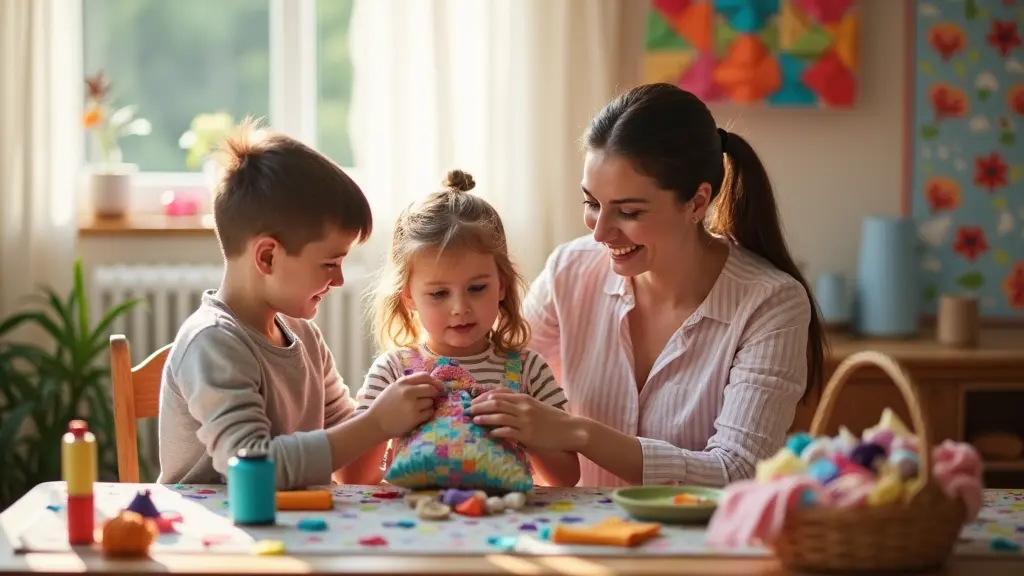
When the world of handcrafted creativity comes alive, there’s no better way to encourage little minds than through a joyous journey of learning and bonding with family.
Sewing with kids offers a therapeutic activity that benefits both parents and children.
It’s an opportunity to create something together, fostering a sense of closeness and shared accomplishment.
While sewing, your child-friendly sewing project will develop essential cognitive skills, such as problem-solving, hand-eye coordination, and dexterity.
Fabric fun and creative stitching will not only aid in their creative development but also enhance their academic performance.
Beyond the obvious benefits, kids craft time also promotes emotional growth. As children work on their beginner projects, they’ll experience a sense of pride and self-confidence that will stay with them for years to come.
Getting Started With Sewing Kits
Discover the Joy of Hand-Eyed Crafting**
When it comes to finding a new hobby, many of us seek activities that allow us to express our creativity, relax, and feel a sense of accomplishment. For those who enjoy playful patterns and the satisfaction of creating something with their own hands, sewing kits can be an incredibly rewarding experience.
I.
Introduction
Sewing kits offer an excellent way for beginners to get started with sewing, as they provide a comprehensive set of tools and materials to complete a specific project.
Not only does this encourage creativity and self-expression, but it also builds confidence and develops essential skills.
Why Start with Simple Projects?
Simple projects, such as sewing a pillowcase or a tote bag, are perfect for beginners as they require minimal childsafe needles and are quick to complete
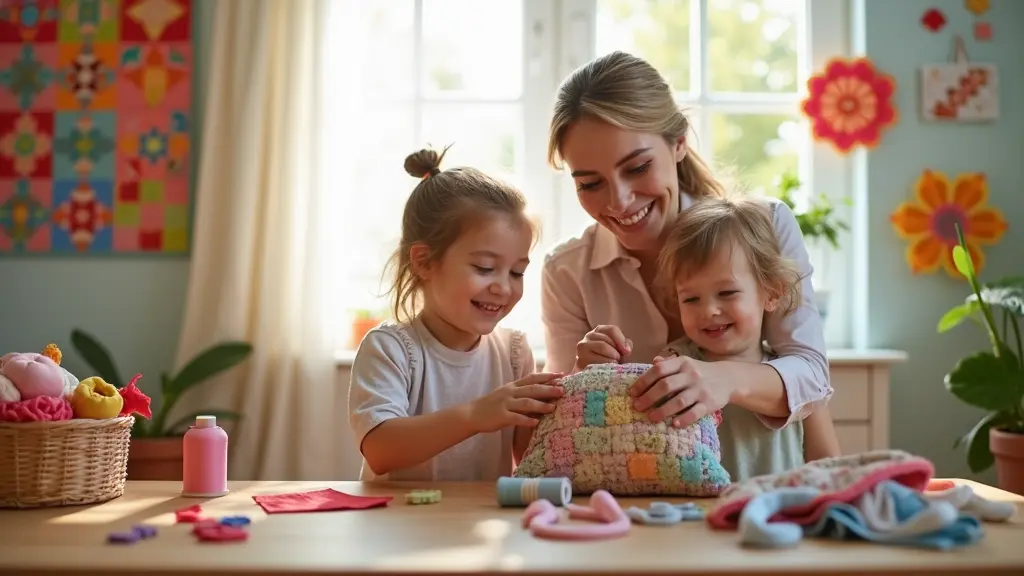
Why Choose Childfriendly Sewing?
Sewing has always been a fascinating activity that brings people together, and when it comes to children, it can be a particularly rewarding experience. Not only does it allow them to create something with their own hands, but it also teaches them valuable skills that can benefit them throughout their lives.
Benefits of Child-Friendly Sewing
• Encourages Creativity and Problem-Solving Skills: Child-friendly sewing projects stimulate imagination and help develop critical thinking.
•
Sewing helps improve dexterity, hand-eye coordination, and overall fine motor skills through the fun and engaging process of stitching basics, kids classes, colorful fabrics, thread and needle, and sewing playtime with the added assistance of pin cushions.
What Are Beginner Projects?
For many children, the world of needlecraft can be a thrilling adventure, filled with endless possibilities and creative freedom. By introducing them to sewing, we can help them develop essential skills, build confidence, and foster a sense of self-expression.
I.
Introduction
Sewing for kids is essential for developing essential skills and fostering creativity.
It provides a unique opportunity for children to express themselves through design and fabrication, while also learning basic life skills like problem-solving and patience.
II.
What Makes Beginner Projects Beneficial?
Building confidence and self-esteem through small achievements is one of the most significant benefits of beginner projects. By completing simple tasks, junior seamstresses can develop a sense of accomplishment, which can translate to other areas of their life. These projects also help them discover their creativity and develop new skills with fabric scissors in hand.
How To Ensure Sewing Safety
While many people enjoy exploring their creative side through DIY crafts, a common concern holds them back: the risk of injury while working with creative fabric art, if the right precautions are not taken. With a few simple steps, anyone can ensure a safe and enjoyable experience that fosters their playful embroidery skills and encourages a lifelong love of sewing.
Understanding the Risks
Sewing can be a hazardous activity if proper precautions are not taken.
Cuts, pinpricks, and loose threads are just a few of the potential hazards associated with sewing.
Understanding these risks is crucial in ensuring a safe and enjoyable sewing experience.
Establishing a Safe Environment
A clean and clear workspace is essential for ensuring sewing safety. Remove any loose fabric scraps or sewing machine parts in the work area to ensure a safe and creative space for sewing machines, playful embroidery, childfriendly patterns, and creative fabric art.
Sewing Safety Precautions
- Cuts, pinpricks, and loose threads are common hazards associated with sewing.
- A clean and clear workspace is essential for ensuring sewing safety.
- Removing loose fabric scraps or sewing machine parts in the work area is crucial for a safe and creative space.
- Understanding the risks of sewing is crucial in ensuring a safe and enjoyable experience.
Creative Stitching For Kids
Unlocking the Power of Creative Stitching for Kids The rise of screen-based activities has led to a significant decline in hands-on creativity among kids, leaving many parents and educators searching for innovative ways to reignite their passion for imagination and self-expression. By introducing creative stitching, we can bridge this gap and provide a unique platform for children to develop their critical thinking skills, while fostering a deeper connection with the world around them.
Discovering the Joy of Handsewing
Creative stitching offers a fun and interactive way for kids to explore textures, colors, and patterns, while creating their own unique fabric art masterpieces.
Simple handsewing techniques can be mastered with ease, allowing children to express their creativity and develop their fine motor skills and hand-eye coordination. Teaching Kids the Value of Focus and Patience by learning to stitch and create beautiful pieces of art. .
Exploring Fun With Fabrics
Unleashing imagination and creativity in children is essential for their overall cognitive and emotional development. One effective way to do so is by providing them with engaging hands-on learning experiences that stimulate their senses and challenge their problem-solving skills.
Fabric exploration is an excellent example of such an opportunity.
Introduction to Fabric Exploration
Fabric exploration is an excellent way to introduce children to the world of textiles.
By experimenting with different fabrics and textures, they can develop their sense of touch and fine motor skills.
Getting Started with Fabric Selection
When choosing a patternmaking fabric for a craft project, consider the type of fabric and its texture.
For example, cotton is a popular choice for sewing circles beginners because it is easy to work with and comes in a variety of weights and textures, perfect for sewing parties. offers a comprehensive guide to crafting with fabrics, covering patternmaking, sewing circles, fabric ideas, sewing parties, sewing safety, and small projects.
| Benefits of Fabric Exploration | Types of Fabrics | Developmental Skills | Age Range |
|---|---|---|---|
| Unleashes imagination and creativity | Cotton, silk, wool, and synthetic fabrics | Sense of touch, fine motor skills, problem-solving skills | Preschool to elementary school age |
| Enhances cognitive and emotional development | Heavy, medium, and light-weight fabrics | Develops sensory awareness and hand-eye coordination | Early childhood to elementary school age |
HandsOn Crafting Sessions
As families and educators recognize the importance of engaging young minds, hands-on learning experiences have become a vital tool in shaping children’s development. By incorporating creative activities into daily routines, parents can encourage growth and exploration in their little ones.
HandsOn Crafting Sessions
HandsOn crafting sessions have numerous benefits for children’s cognitive, social, and emotional development.
Embracing Creativity
Sewing games, for instance, help children develop fine motor skills and hand-eye coordination, while family time spent on fabric fun fosters self-expression and creativity. encourage them to develop problem-solving skills.
Supervised Sewing For Beginners
From the moment we learn to tie our shoes to the first time we hold a paintbrush, making something with our own hands is an innate desire to create. Supervised learning experiences like sewing sessions for beginners are an excellent way to nurture this instinct.
When you learn to sew, you’re not just creating something new – you’re developing a lifelong skill that can bring joy, creativity, and a sense of accomplishment.
Cultivating patience, focus, and attention to detail, supervised sewing is an excellent way to improve your concentration and develop problem-solving skills.
With childfriendly tools and easy stitch projects, beginners can start with simple DIY kits and gradually move on to more complex projects. is a treasured experience that fosters imagination and self-expression while promoting meaningful parent-child relationships.
Sewing
- Learning to sew can improve concentration and develop problem-solving skills.
- Sewing can be a lifelong skill that brings joy, creativity, and a sense of accomplishment.
- Supervised sewing experiences can foster imagination and self-expression while promoting meaningful parent-child relationships.
- Sewing can be a great way to develop patience, focus, and attention to detail.
Sewing Machine Tips For Fun And Creativity
Hand Sewing Techniques For Fun And Creativity
Hand Sewing Techniques For Fun And Creativity
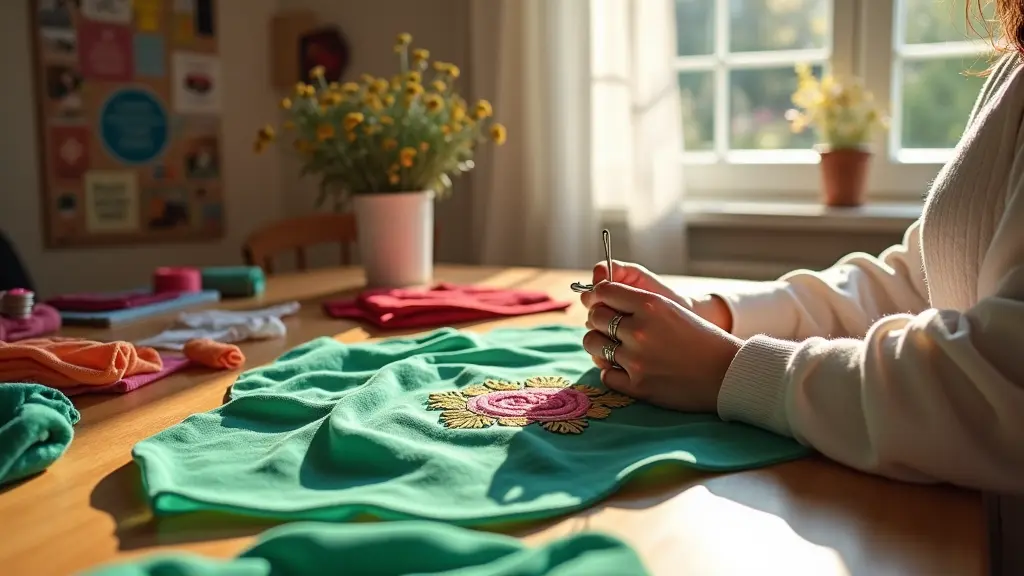
The joy of crafting with one’s own hands! Hand sewing techniques offer a world of creative possibilities, inviting crafty enthusiasts to express themselves through intricate designs and charming creations. While many people turn to modern sewing machines for efficiency, hand sewing techniques remain a timeless and intimate way to connect with one’s craft.
Fabric manipulation and thread artistry require a level of dexterity and attention to detail that can be meditative and therapeutic.
As a relaxing and meditative activity, hand sewing techniques can help reduce stress and anxiety, allowing individuals to unwind and tap into their creative potential.
With the subtle nuances of needlework skills and the gentle cadence of stitch patterns, hand sewing becomes a form of mindfulness that nourishes both body and soul. Whether creating intricate embroidery, it requires a combination of embroidery stitches, fabric manipulation, stitch patterns, needlework skills, thread artistry, and sewing creativity.
Getting Started With Needlework Skills
A Path to Relaxation and Fulfillment Finding joy in the simple act of creating something with your own hands can have a profound impact on your mental and physical well-being. By sewing enjoyment, one can quiet the mind and focus on the present moment, leading to a sense of calm and tranquility.
Needlework is a broad term that encompasses a range of techniques and skills used to sew, embroider, or otherwise decorate fabric using a needle and thread.
From embroidery to cross-stitch, quilting to fabric embellishment, there are countless ways to express yourself creatively through running stitch and backstitching.
Needlework offers numerous benefits for those who pursue it. It provides a sense of accomplishment and pride in one’s work, while also allowing for self-expression and creativity.
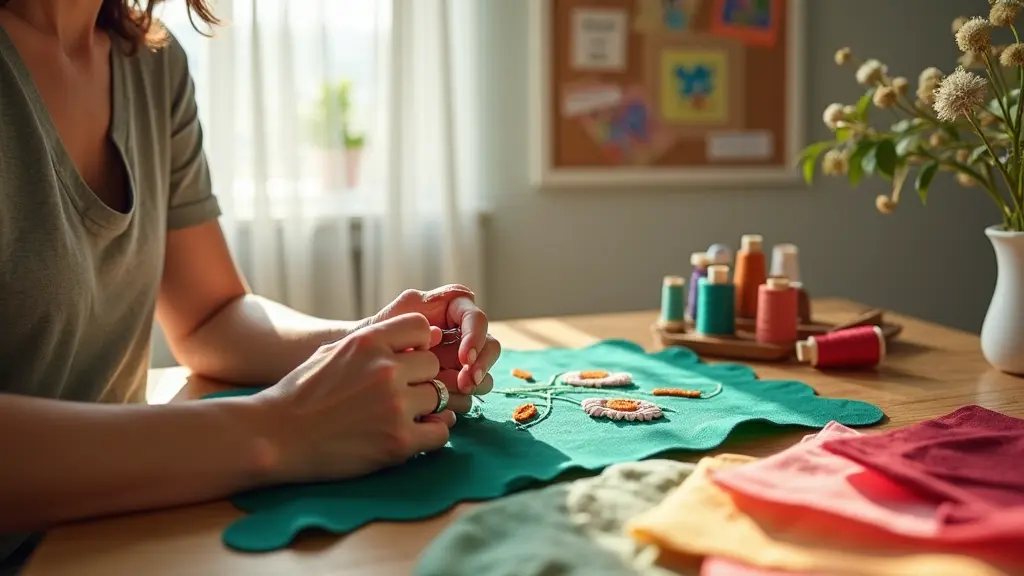
How To Thread a Needle
With the right technique, sewing becomes a breeze, and projects come alive with precision and finesse. By employing the art of whipstitch, for instance, you can create intricate designs that add texture and visual interest to your fabric.
Proper needle-threading is the foundation of any successful sewing endeavor, whether you’re a seasoned quilter or a beginner crafting a simple garment that requires hand quilting.
I.
Introduction to Threading a Needle
* Importance of Threading a Needle Correctly: Proper needle-threading ensures that your stitches are evenly spaced, your threads don’t tangle, and your fabric isn’t damaged. Darning a hole in a favorite sweater, for instance, requires precise needle-threading to achieve a seamless repair. * designs a new sewing project, choosing from whipstitch, hand quilting, darning, smocking, appliqué.
Needle-Threading
- Using the correct needle size and type for your project is crucial for proper thread alignment.
- A well-threaded needle reduces the risk of thread tangling and knots, making sewing easier and more efficient.
- Proper needle-threading is essential for achieving even stitches, which is critical for projects that require precision, such as hand quilting and darning.
- A correctly threaded needle also helps prevent fabric damage, ensuring that your finished project looks professional and well-made.
Exploring Basic Stitch Patterns
Unlocking the World of Hand-Sewing: A Journey of Creative Expression As humans, we have an inherent desire to create and express ourselves through various forms of art. Hand-sewing offers a unique platform for crafters to showcase their creativity and produce beautiful pieces that not only bring joy but also serve as a tangible representation of their skills.
With the versatility and durability of basic stitch patterns, the opportunities for artistic expression are endless.
Fundamental Stitches
Running stitch, backstitch, and whipstitch are the building blocks of hand-sewing.
Mastering these basic stitches is crucial for creating beautiful fabric art. Learn how to execute each stitch with precision and confidence.
Beyond the Basics
Take your stitching skills to the next level by exploring stitch variations and embellishments. Combine basic stitch patterns to create unique and personalized fabric art, crafting joy, and beautiful needlecraft projects.
Creative Fabric Manipulation Ideas
As we venture into the realm of handmade art, we find ourselves drawn to the tactile world of fabrics. Sashiko stitching, for instance, allows us to weave together threads of creativity, precision, and patience.
Freeform embroidery comes alive with the gentle touch of a needle, as decorative stitching unfurls a narrative of personal expression.
Meanwhile, quilting bees bring together like-minded souls, their collective energy feeding into the fabric of our lives.
Heirloom sewing bridges the past and present, imbuing each stitch with a sense of heritage. By embracing these traditional techniques, we can tap into the therapeutic benefits of creative fabric manipulation, which have been shown to reduce stress and boost mental well-being.
Handmade Art
- Research suggests that engaging in creative activities like sashiko stitching, freeform embroidery, and quilting can reduce stress and boost mental well-being.
- Studies have shown that the tactile nature of handmade art can increase feelings of calm and relaxation, providing a healthy outlet for emotions.
- The therapeutic benefits of creative fabric manipulation can also improve cognitive function and memory, particularly in older adults.
- Participating in quilting bees and other social handmade art activities can help build social connections and a sense of community, reducing feelings of loneliness and isolation.
Embracing Sewing Enjoyment
Discovering the Joy of Hand Sewing. Slow stitching becomes a meditation, a way to quiet my mind and focus on the gentle rhythm of the stitches.
Needlepoint embroidery, with its intricate patterns and delicate thread, is a testament to the human ingenuity that has shaped this ancient craft.
Fabric crafting, whether it’s repairing a torn garment or creating a new piece from scratch, becomes an exercise in patience and attention to detail.
Stitch sampler patterns, with their repeating motifs and textures, are a delightful way to experiment with different techniques and build confidence as a sewer. And when I’m done, the sense of accomplishment is palpable, a reminder that I’ve created something with my own two hands.
Decorative Techniques For Fabric Embellishment
The art of fabric decoration has been a cherished tradition for centuries, allowing creatives to express themselves through intricate designs and patterns. As a unique way to add character to fabrics, embellishment techniques have evolved over time, incorporating various methods to create stunning fabrics that captivate the senses.
Embellishing with Stitches
A threads and yarns, a fundamental understanding of basic stitches is crucial for fabric embellishment.
From simple running stitch to intricate cross-stitch, choosing the right stitch for your fabric and design is vital.
With personalized stitching, you can create beautiful designs that not only add visual appeal but also enhance the texture and drape of the fabric.
Stitch tutorials can help you master various stitching techniques.
With practice, you can create intricate designs that showcase your artistic sewing skills, taking your textile arts to the next level. Adding dimension to your artistic vision through innovative techniques like thread painting, artistic sewing, textile arts, sewing workshops, personalized stitching, and stitch tutorials.
Embellishing with Stitches Facts
- Basic stitches are crucial for fabric embellishment.
- Choosing the right stitch for your fabric and design is vital.
- Stitch tutorials can help you master various stitching techniques.
- Practice is necessary to create intricate designs and showcase artistic sewing skills.
Why Is Stitch Practice Important?
As our world becomes increasingly dependent on technology, the value of traditional handwork skills is often overlooked. Honing your hand sewing skills can revolutionize your creative pursuits and open doors to new artistic possibilities, making it an essential skill to develop in today’s digital age.
I.
Introduction
As we navigate modern times, the importance of handwork cannot be overstated.
Whether creating beautiful pieces for personal use or for gifting, hand sewing has become a beloved hobby and a valuable skillset. With regular practice, you can achieve mastery in hand sewing techniques, unlocking a world of creative possibilities.
II.
Improved Technique and Accuracy
When you commit to regular stitch practice, you’ll find that your hand-eye coordination and dexterity improve significantly. This enhanced dexterity allows for faster and more accurate stitching, making complex sewing projects, such as handsewn gifts and intricate sewing patterns, a joy to complete.
Discovering Your Sewing Creativity
Discovering Your Sewing Creativity As we navigate the complex world of DIY projects, there’s a sense of liberation in creating something that’s uniquely yours. For many people, sewing is a way to express this individuality.
When you focus on the basics of sewing, you’re laying the foundation for experimenting with different techniques, fabrics, and designs, which can lead to a sense of freedom and creativity.
The simple act of sewing can transform into a symphony of fabric fun, as you weave together disparate elements to create something entirely new.
Take, for example, the process of recycling fabric, where you can breathe new life into old or discarded materials to create something entirely new and beautiful. With a sewing kit filled with a variety of fabrics, threads, and notions, you can unleash your imagination and create custom embroidery, textile designs.
Sewing Creativity
- Sewing can be a way to express individuality and creativity.
- Focusing on the basics of sewing allows for experimentation with different techniques, fabrics, and designs.
- The process of recycling fabric can breathe new life into old or discarded materials and create something entirely new and beautiful.
- A sewing kit filled with a variety of fabrics, threads, and notions can unleash imagination and create custom embroidery, textile designs.
Sewing With Kids Fun And Creative
Quilting Tutorials Bring Joy and Creativity
